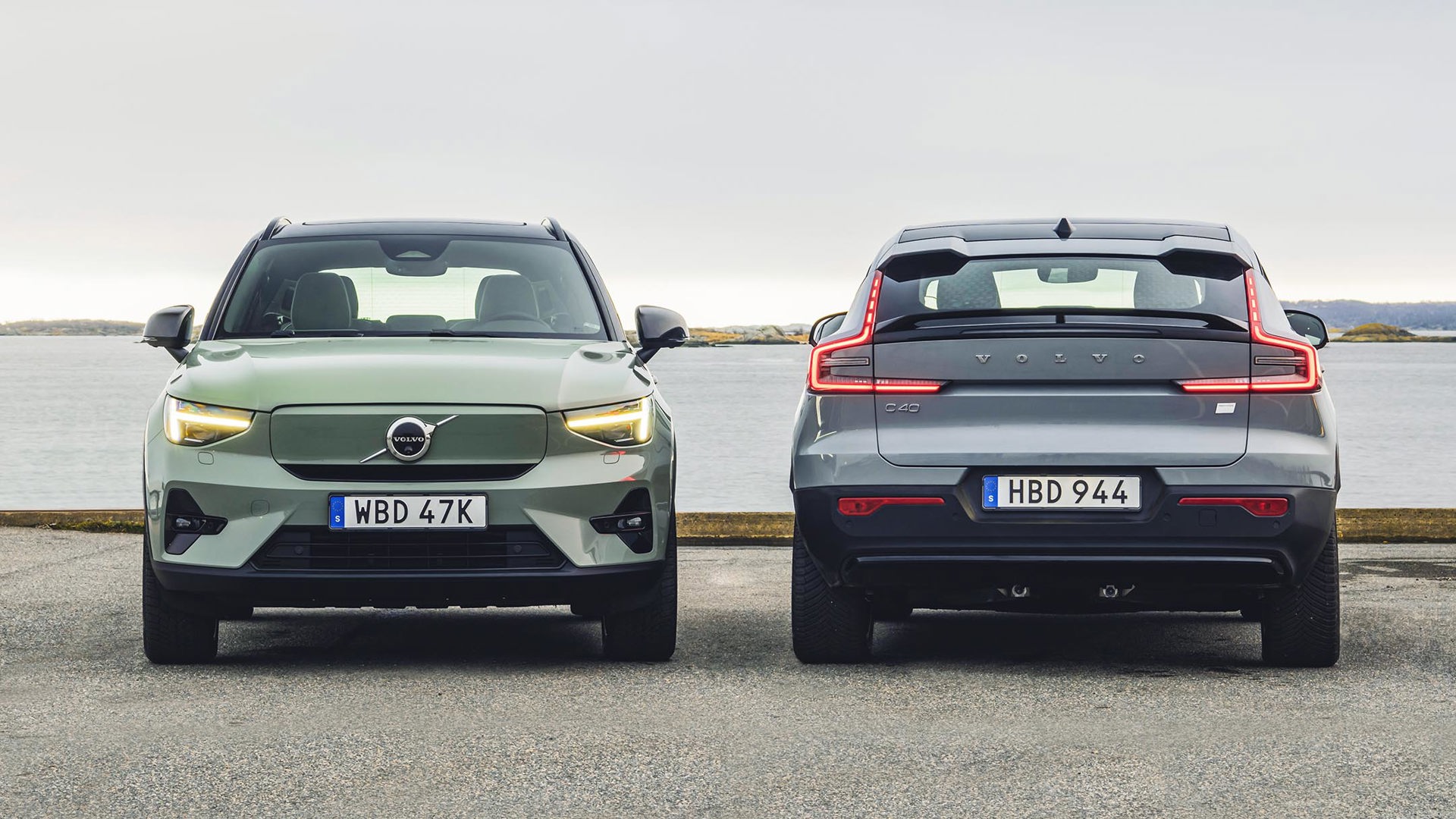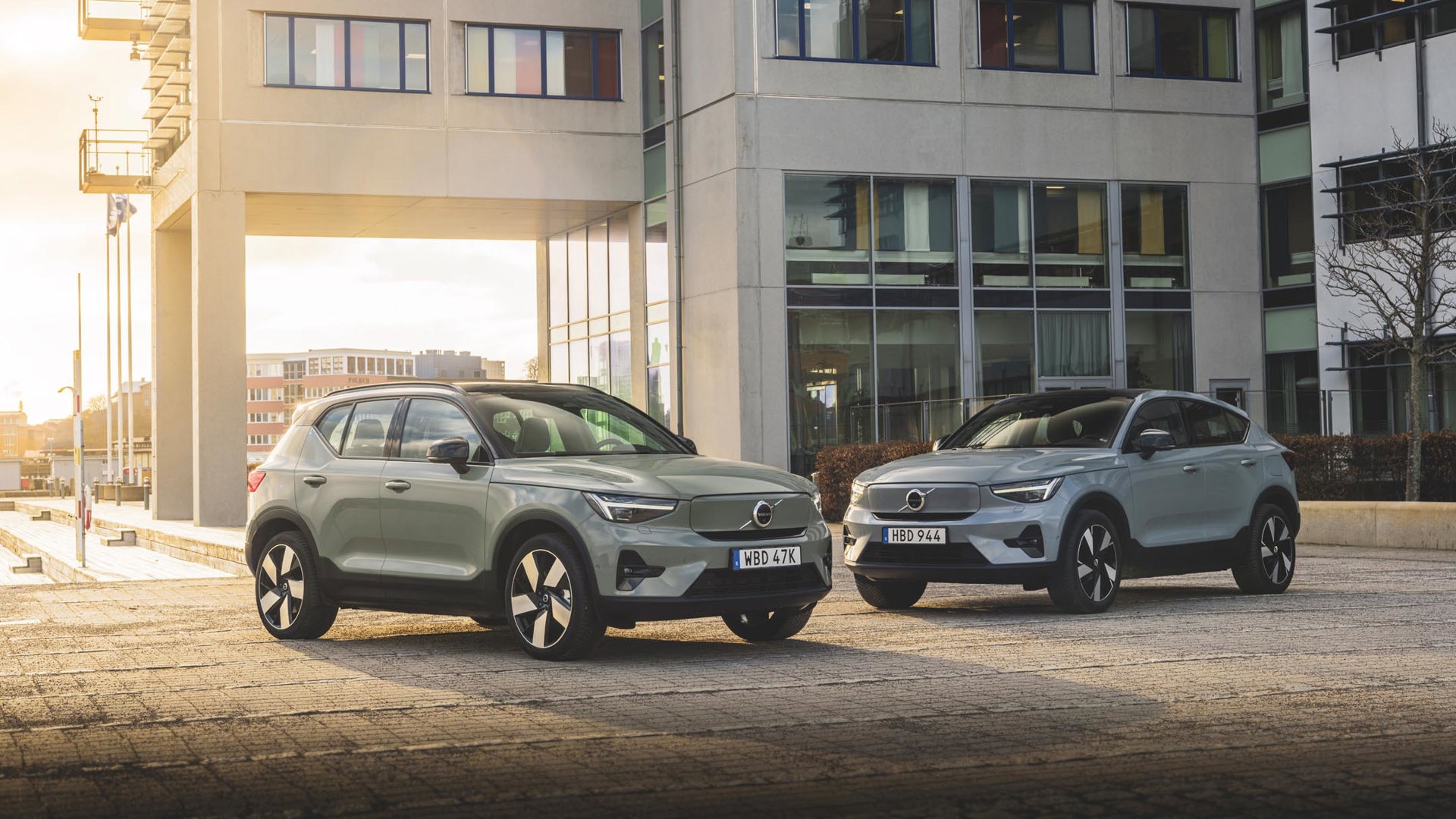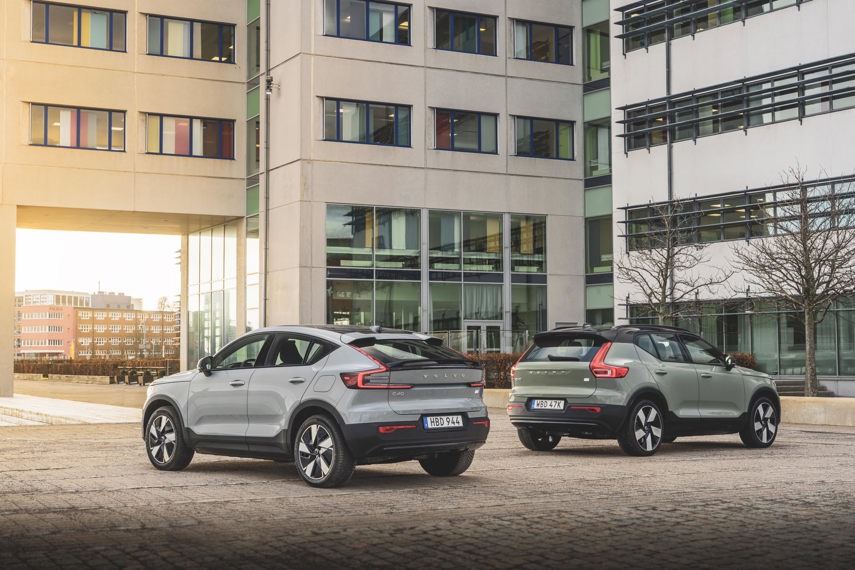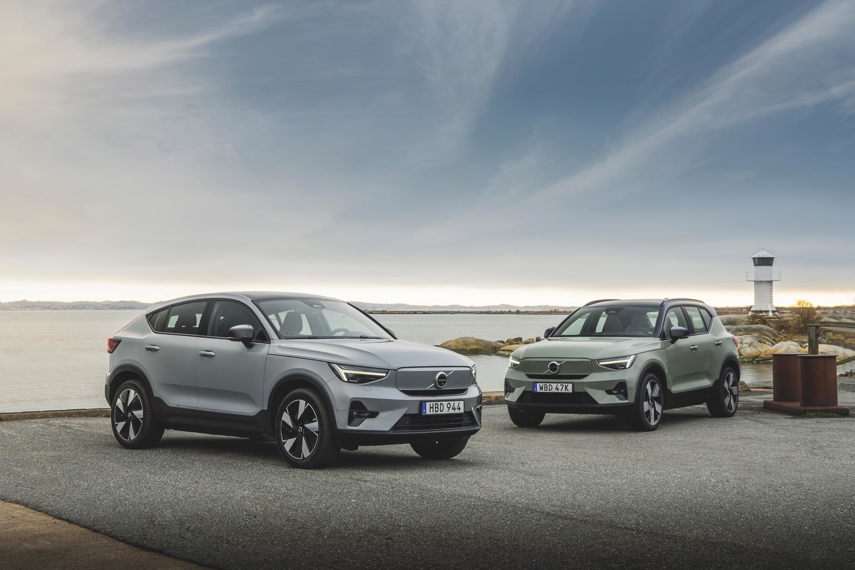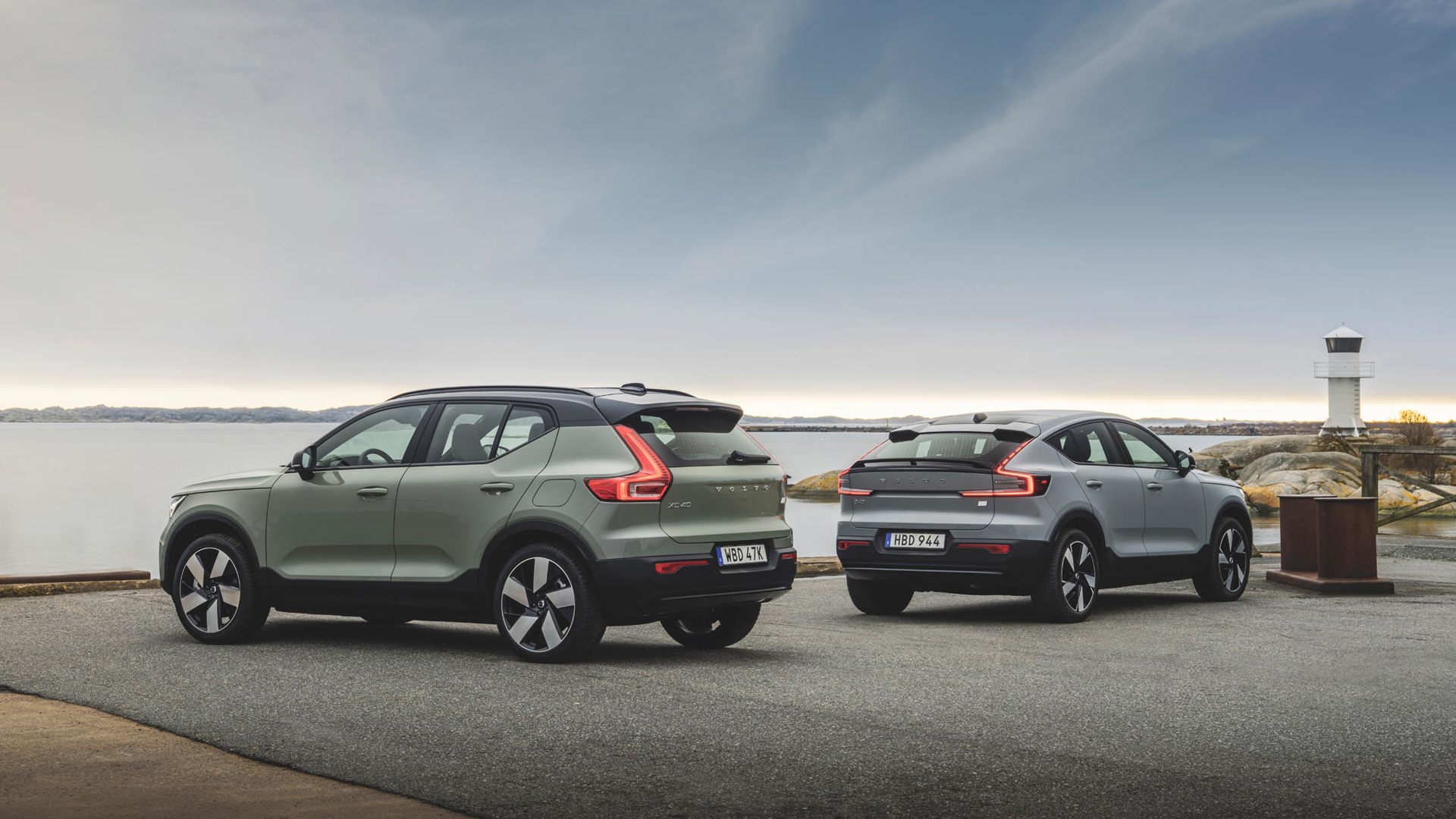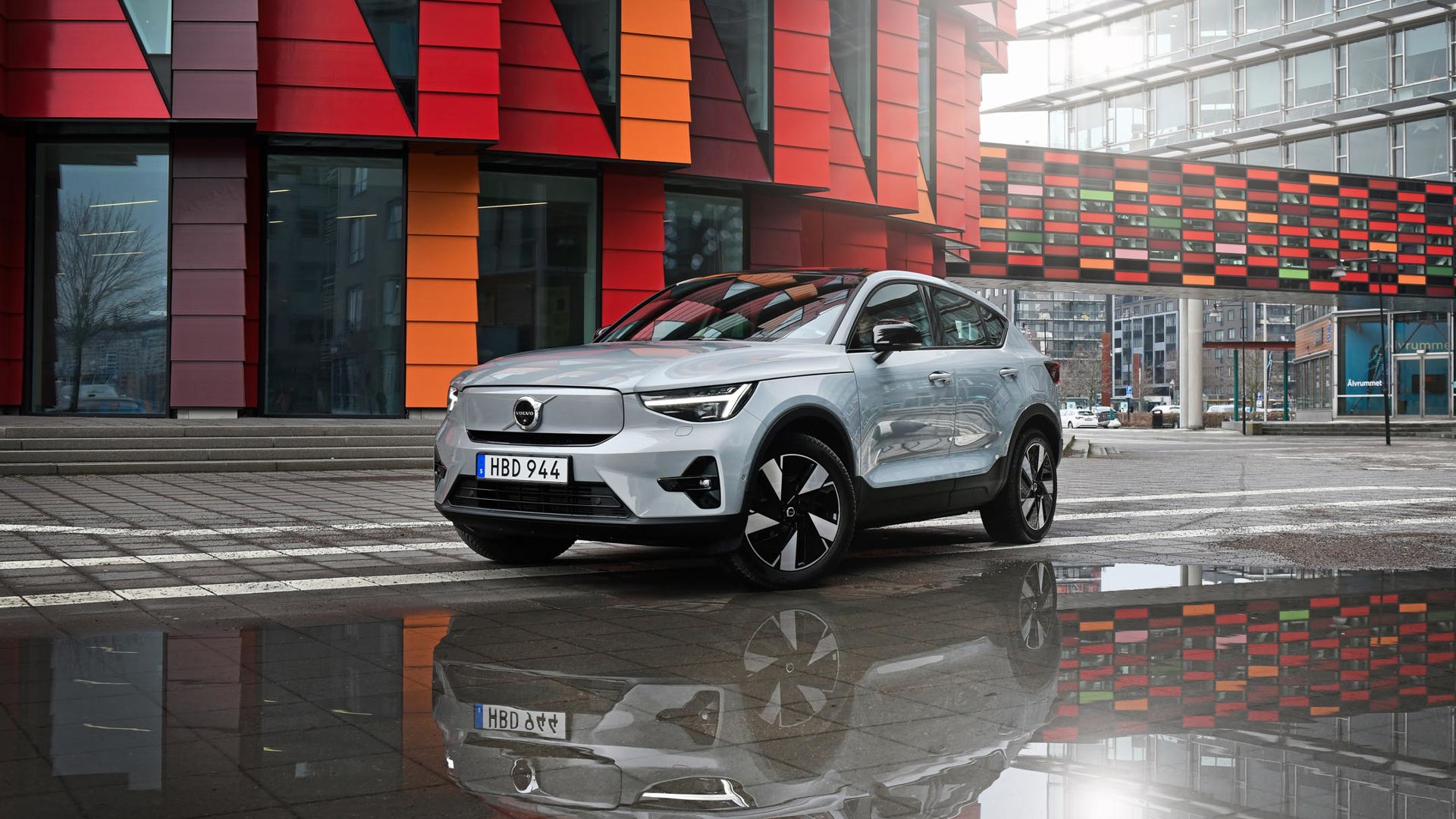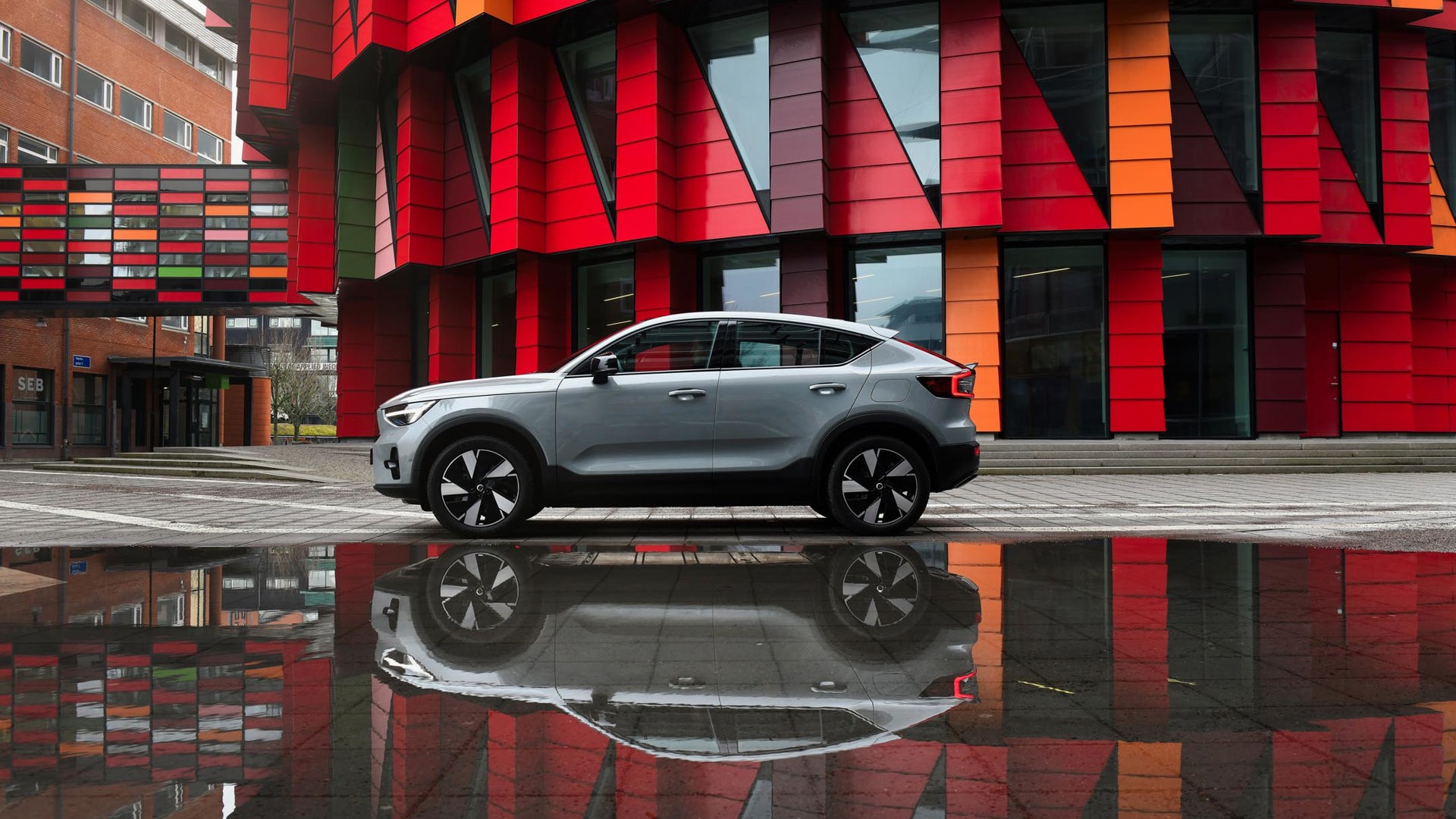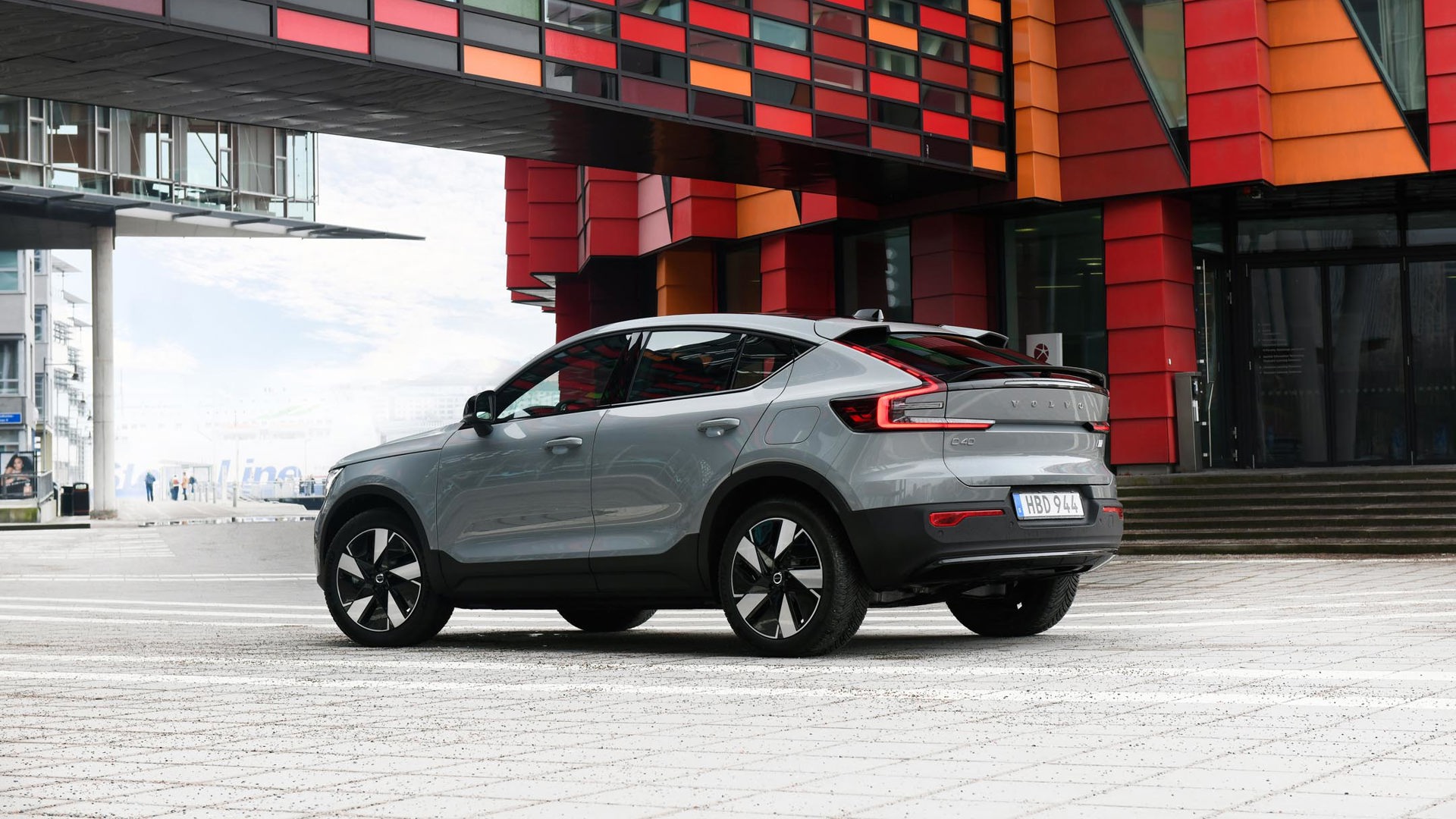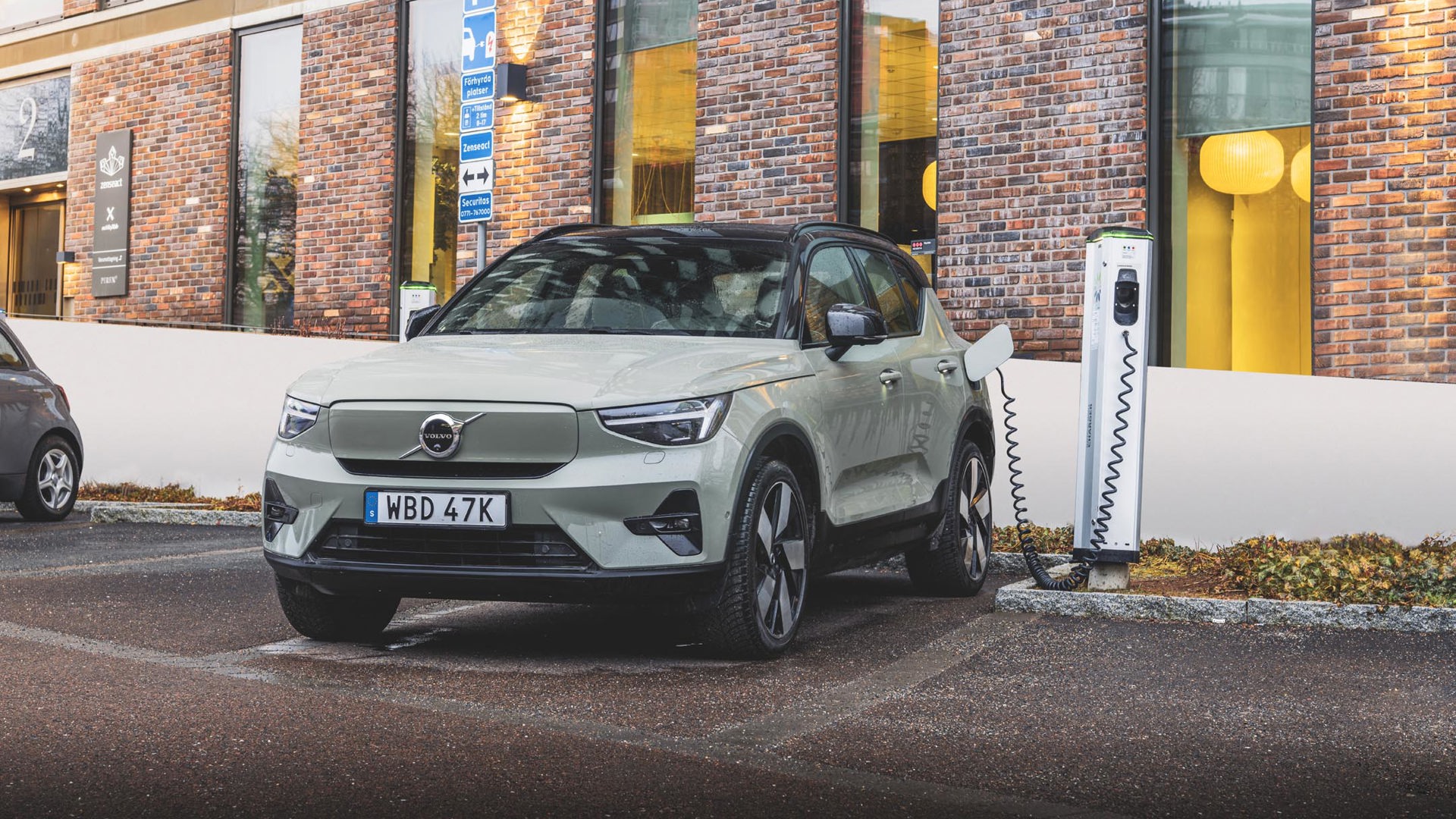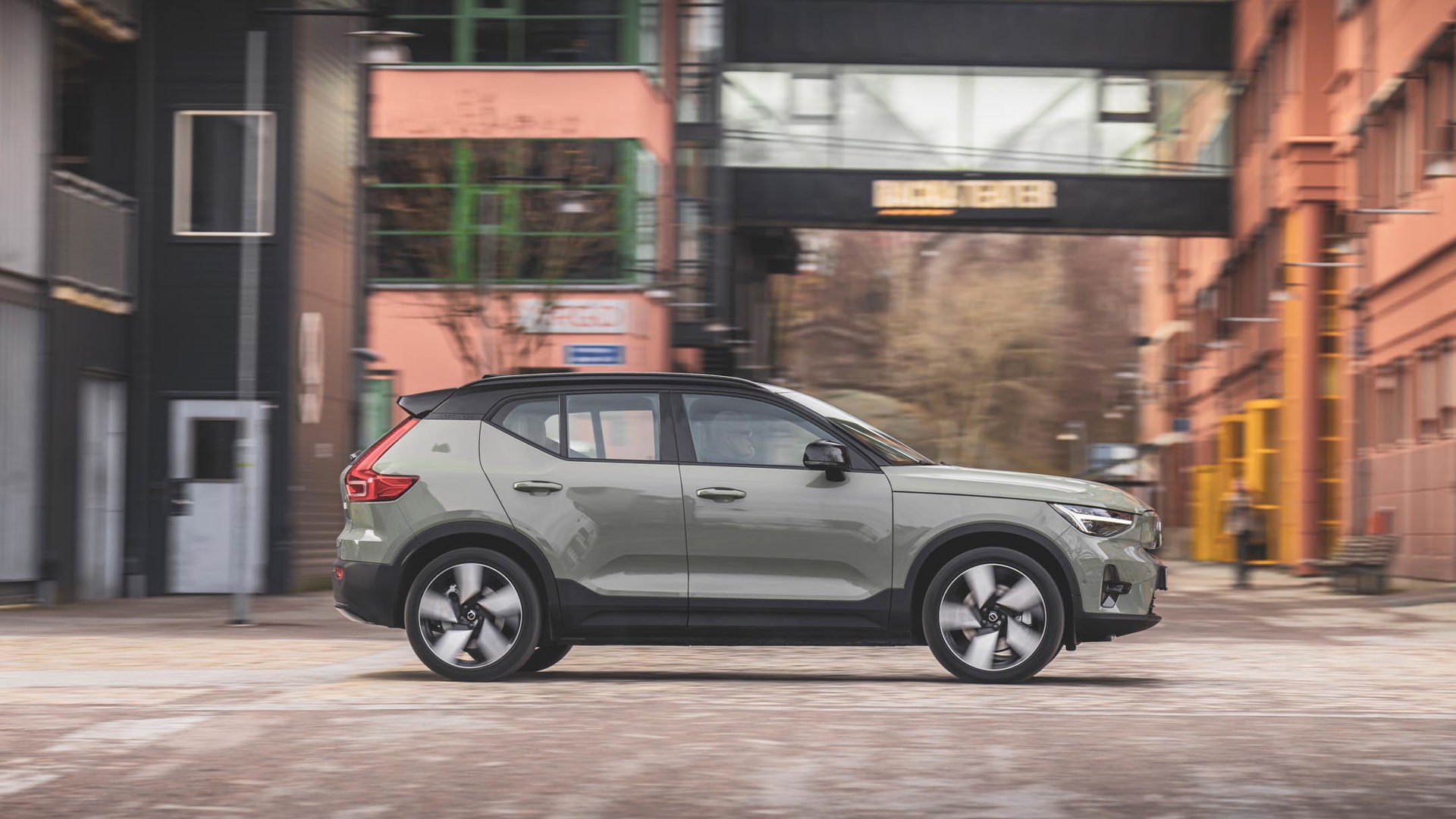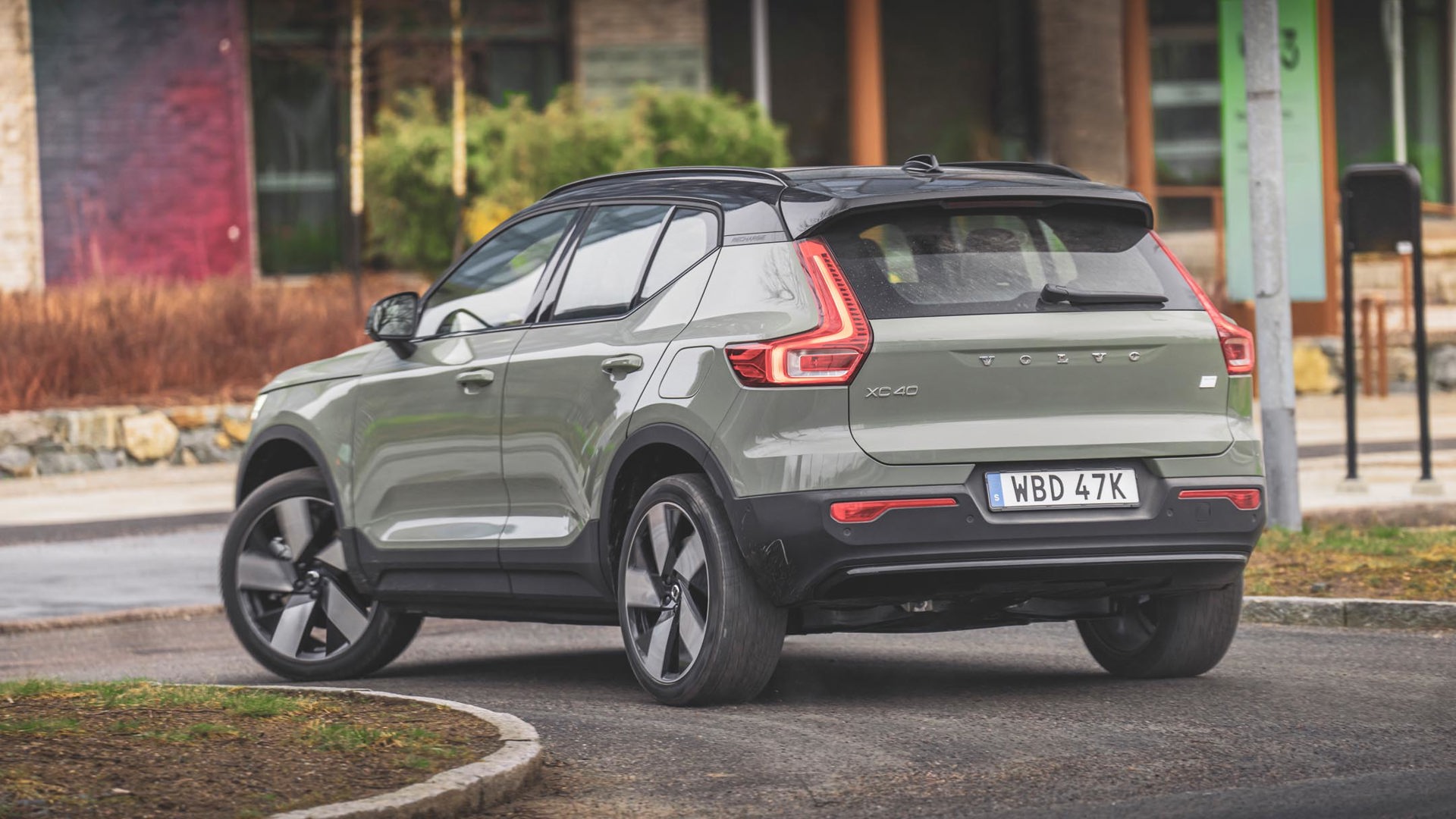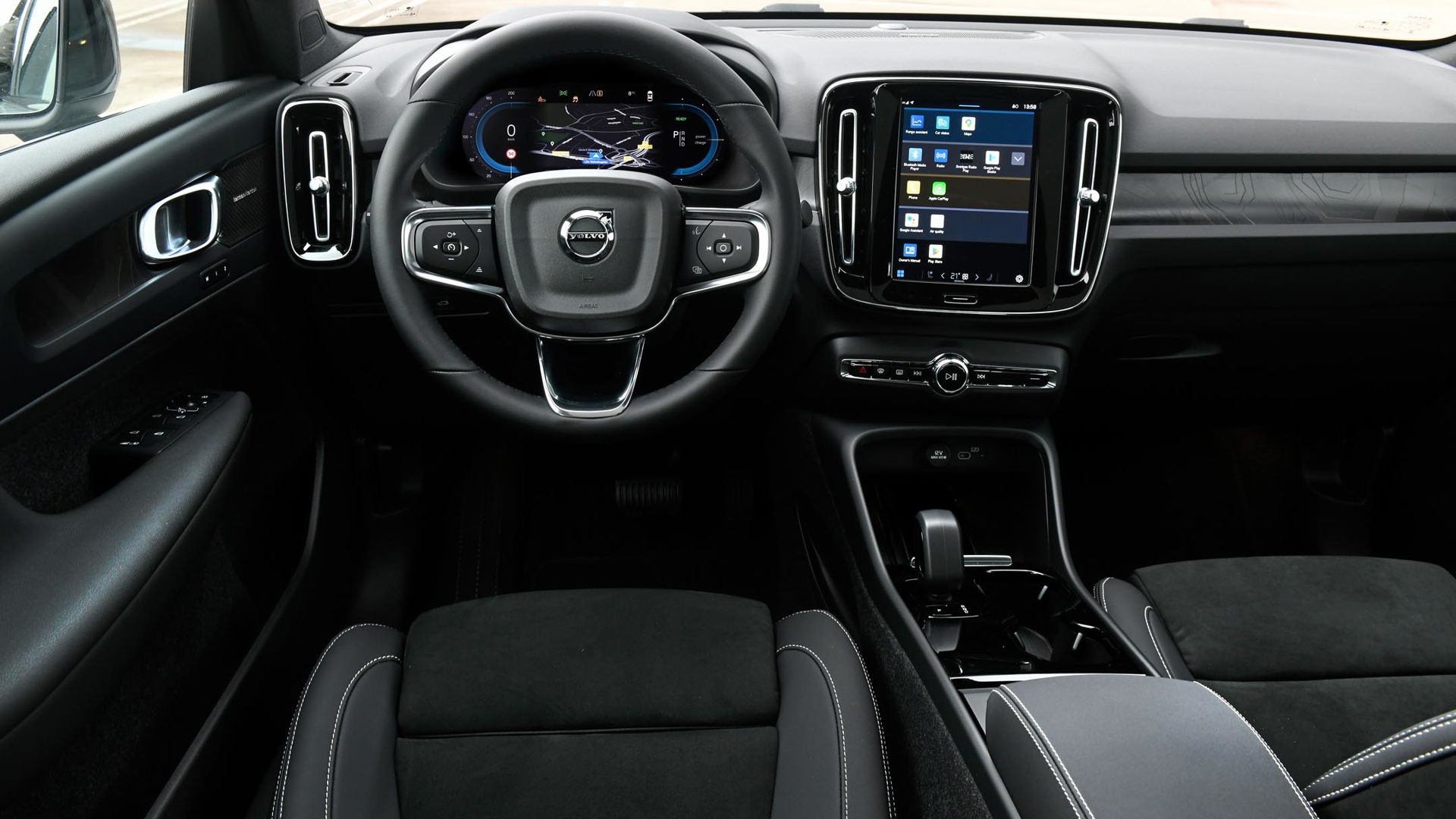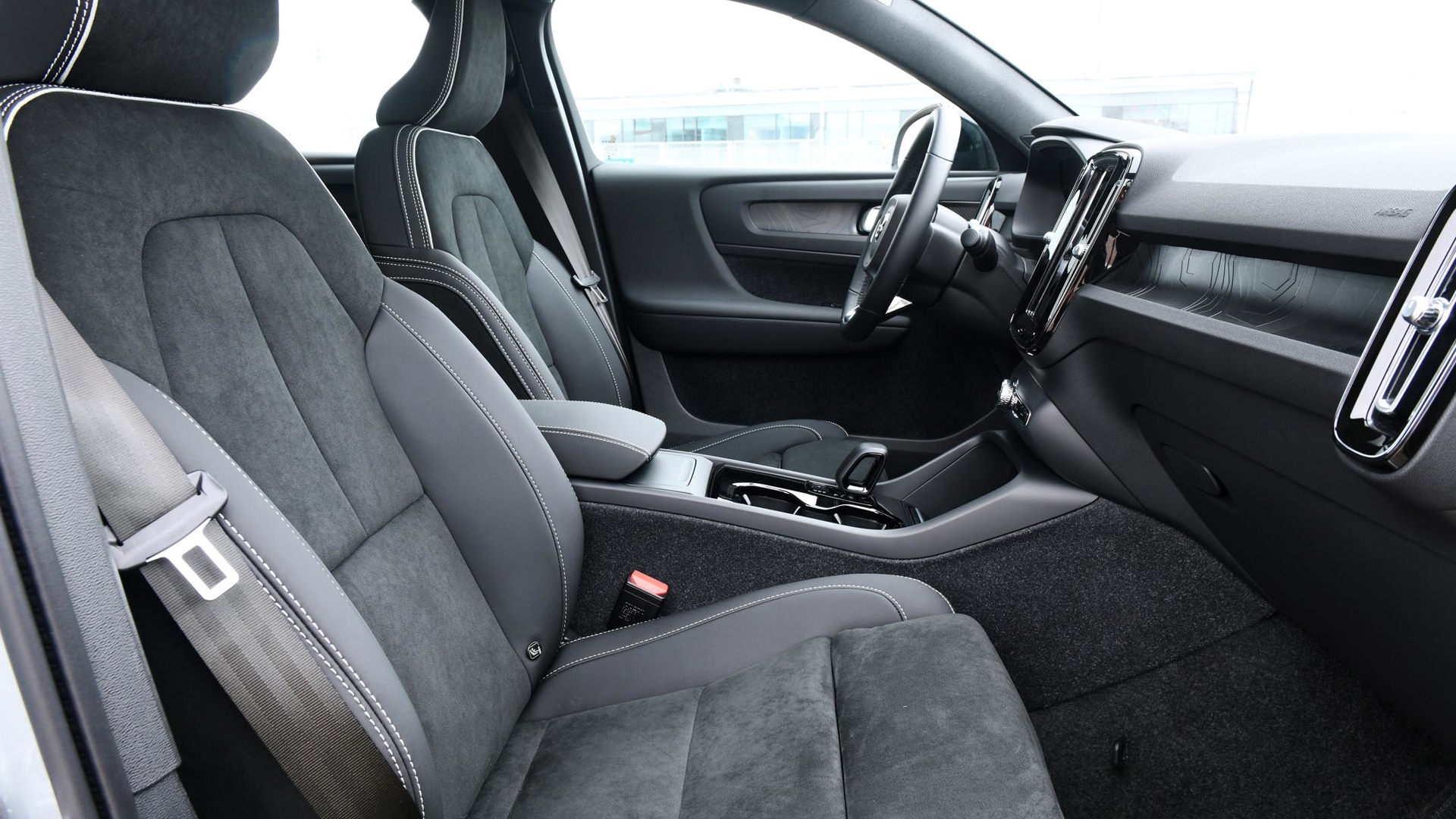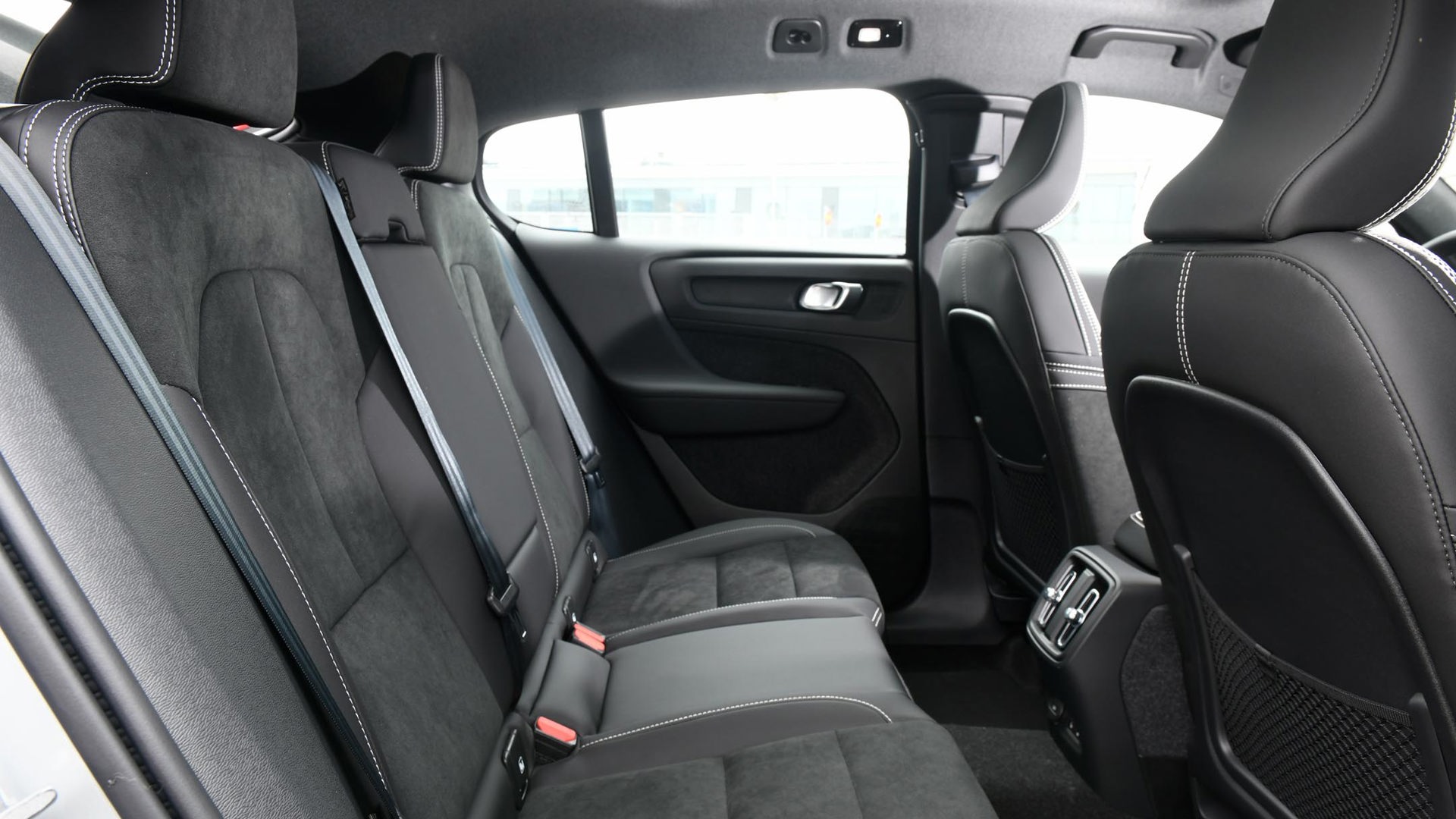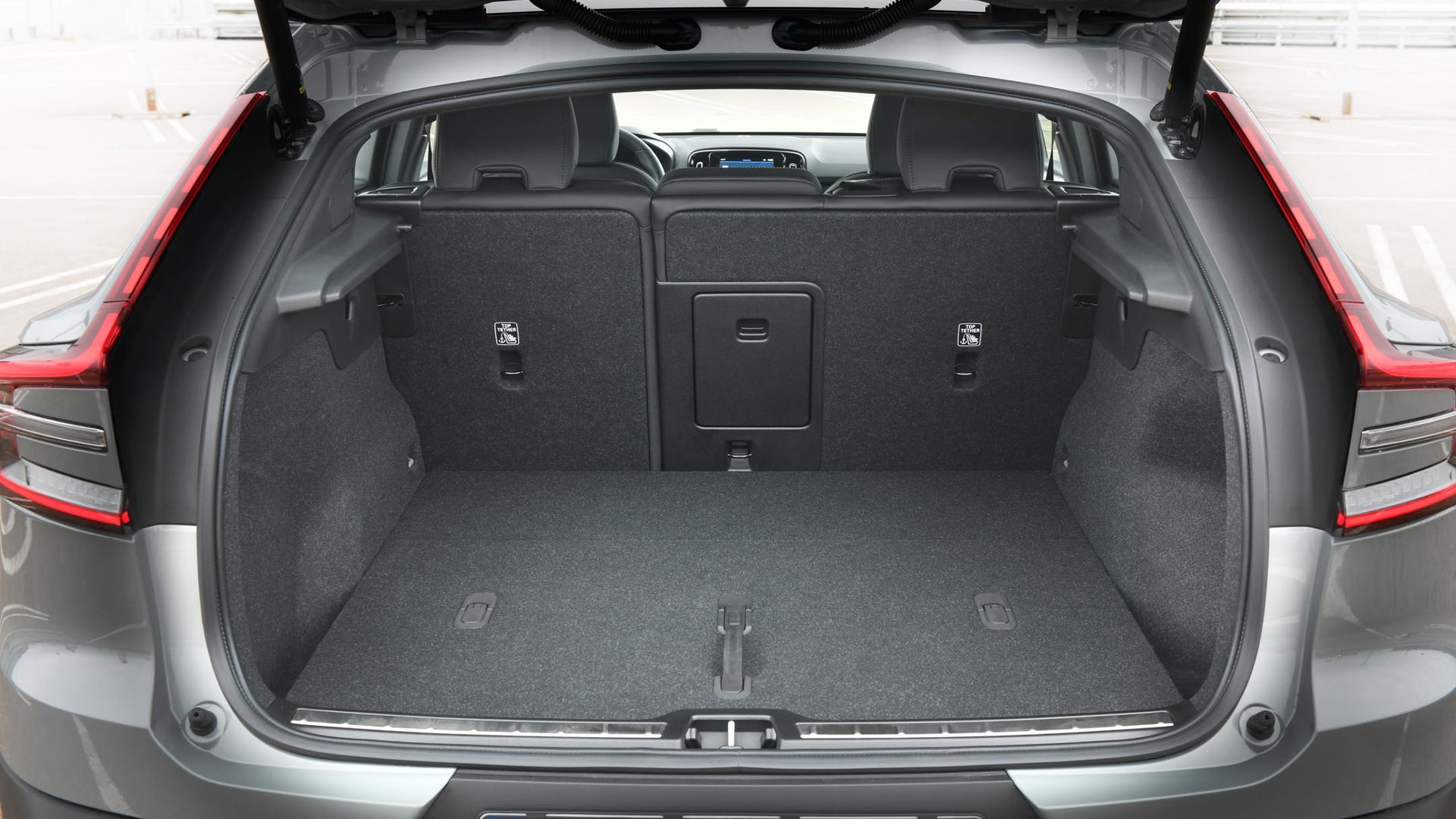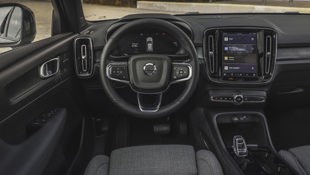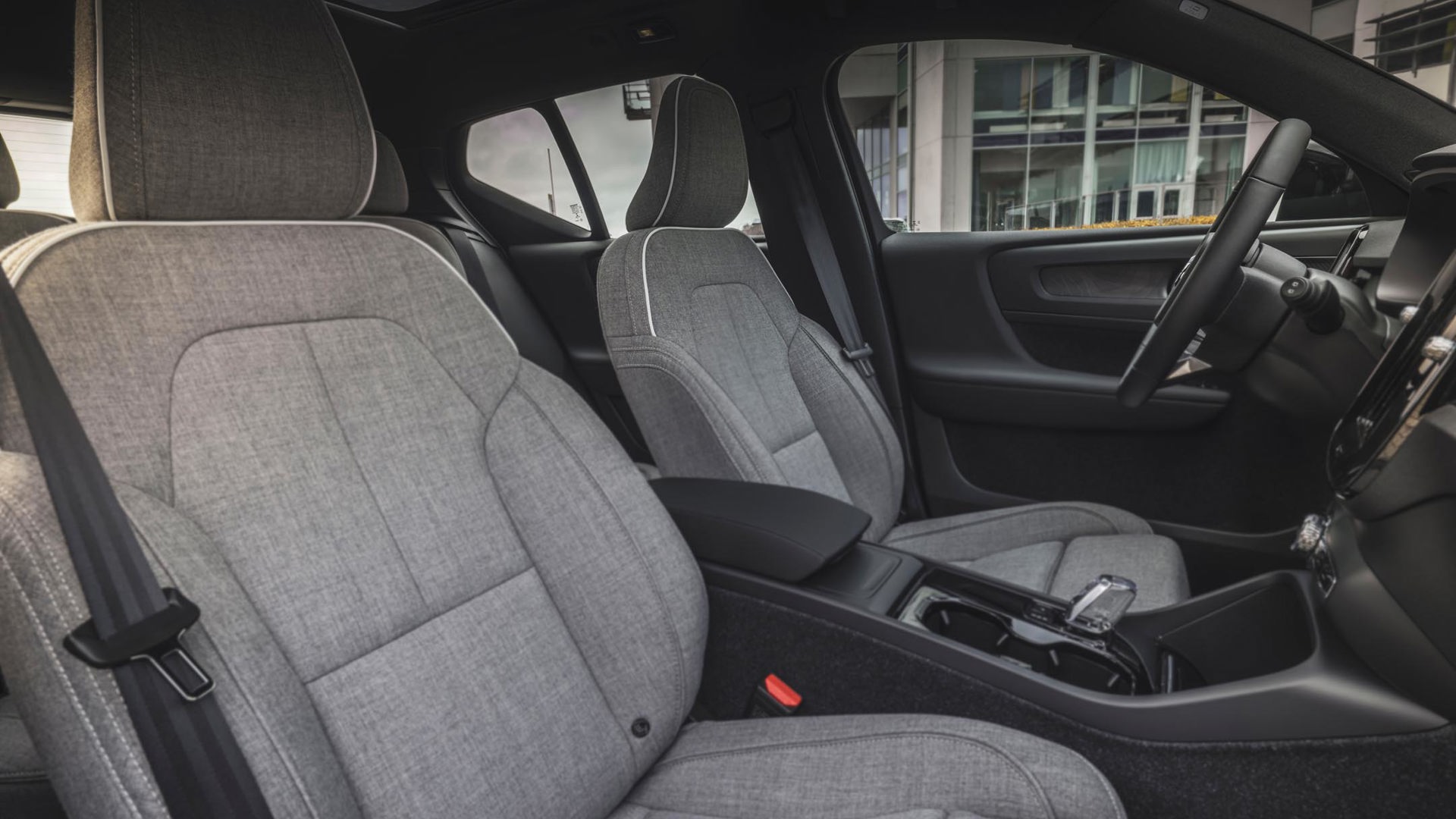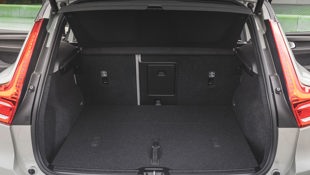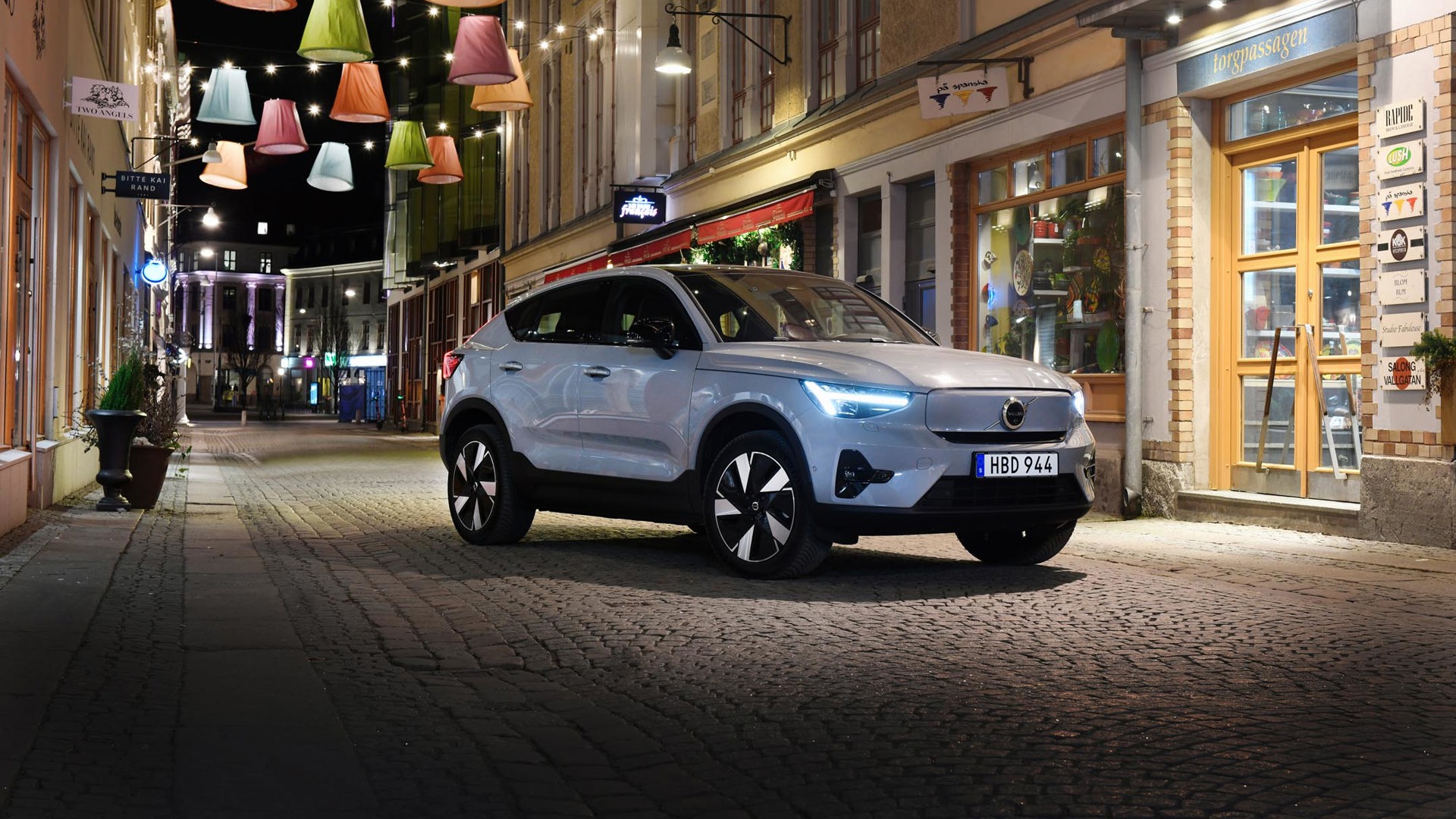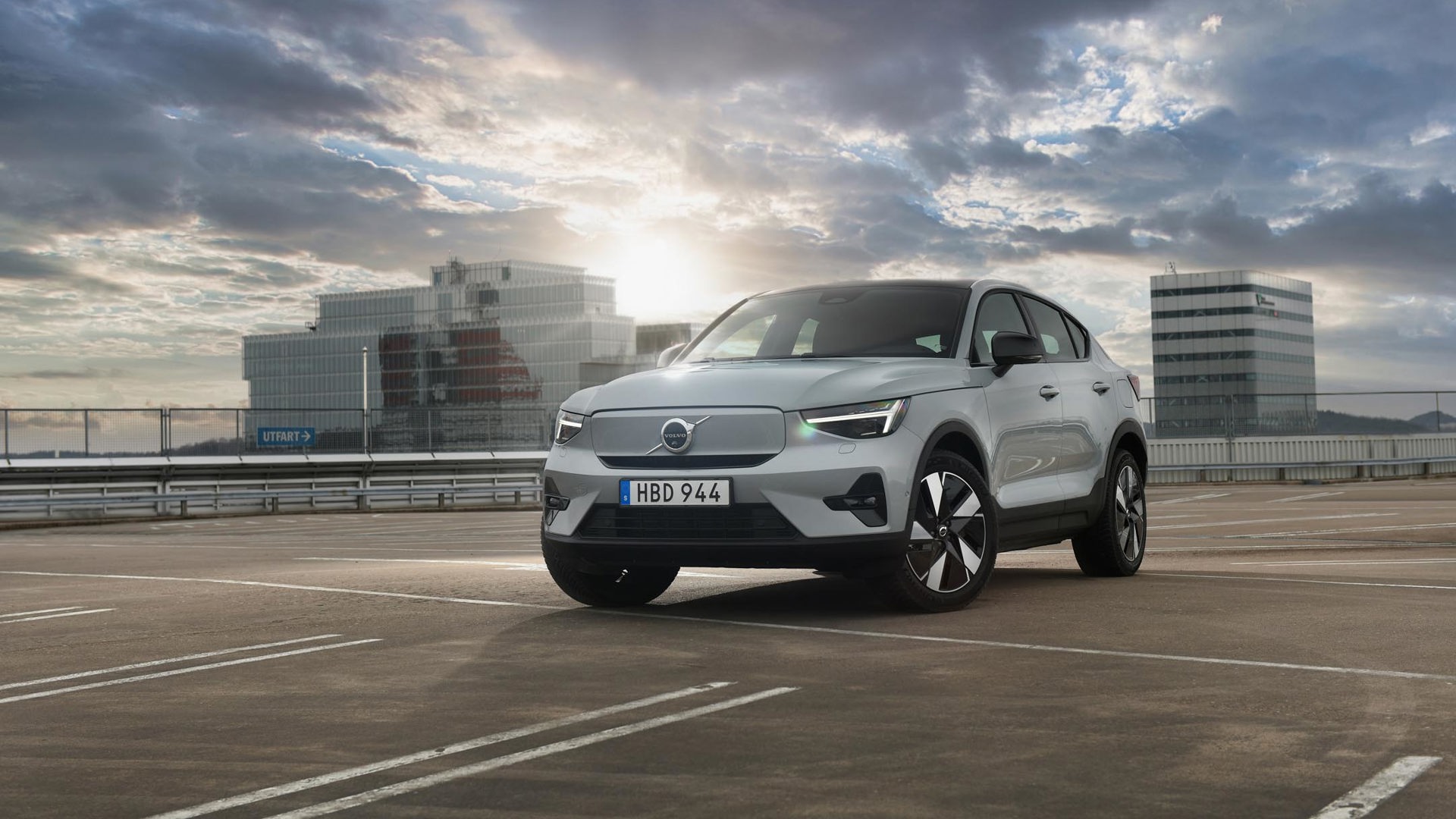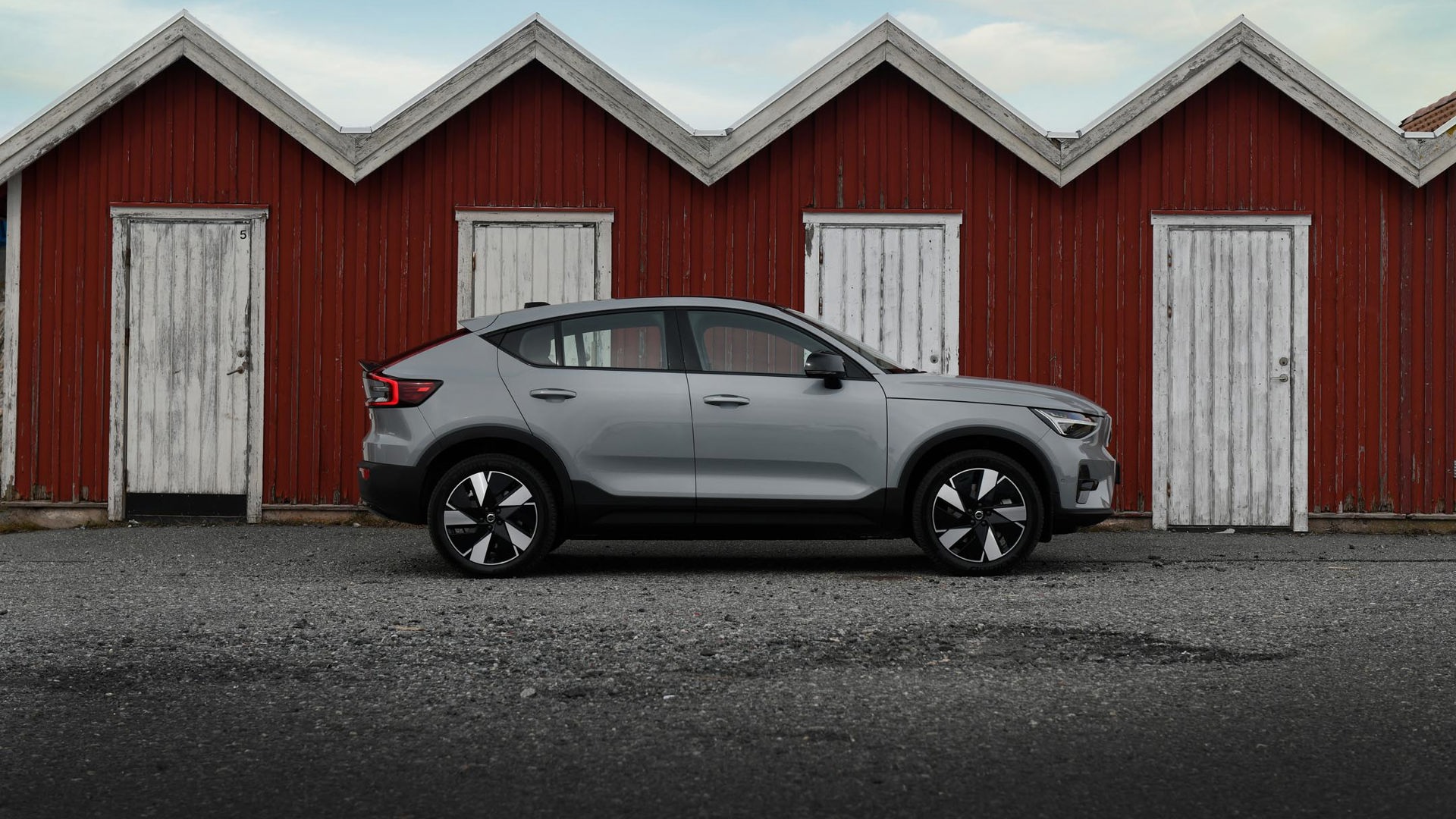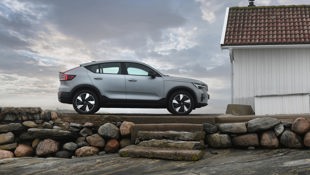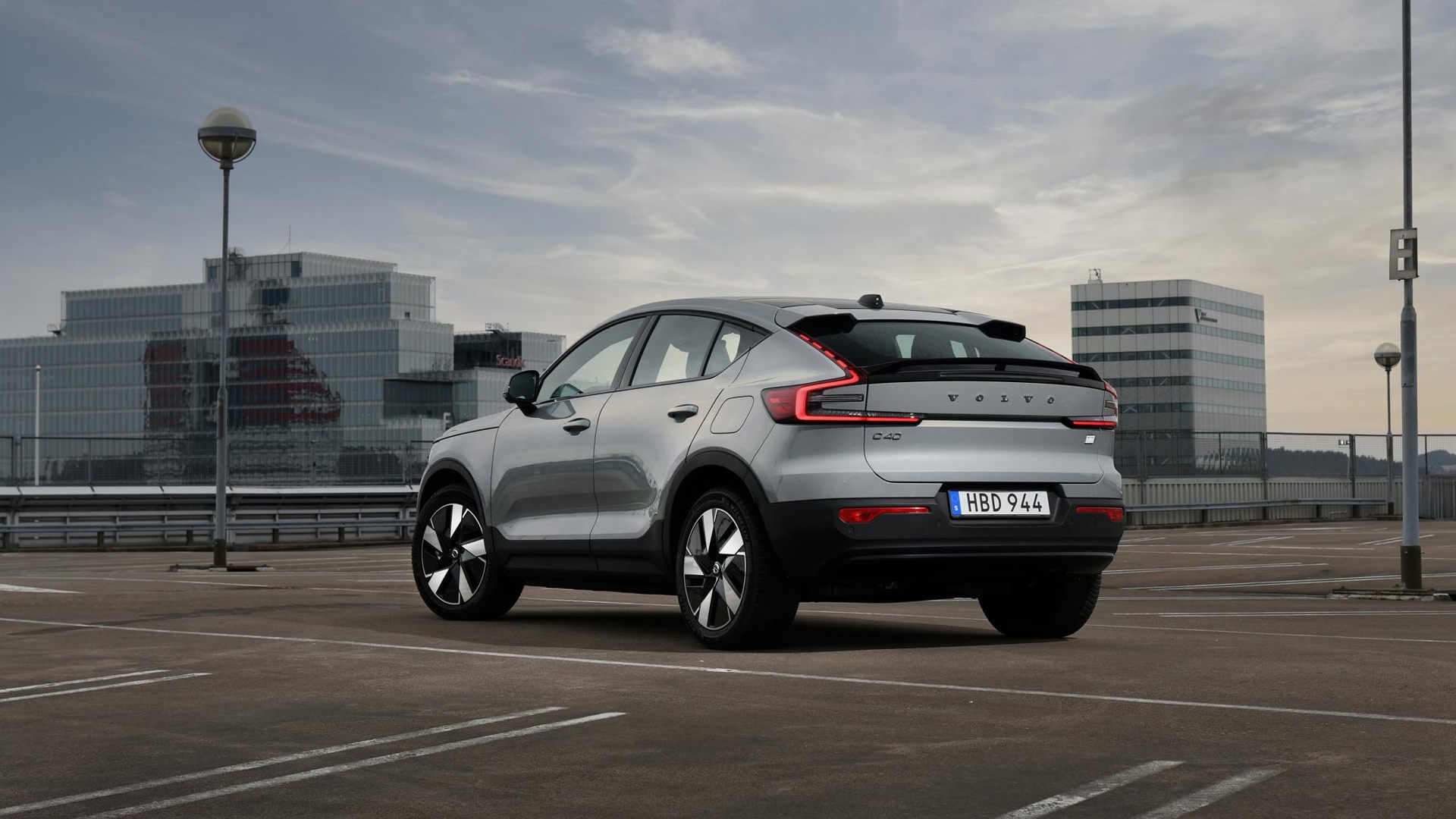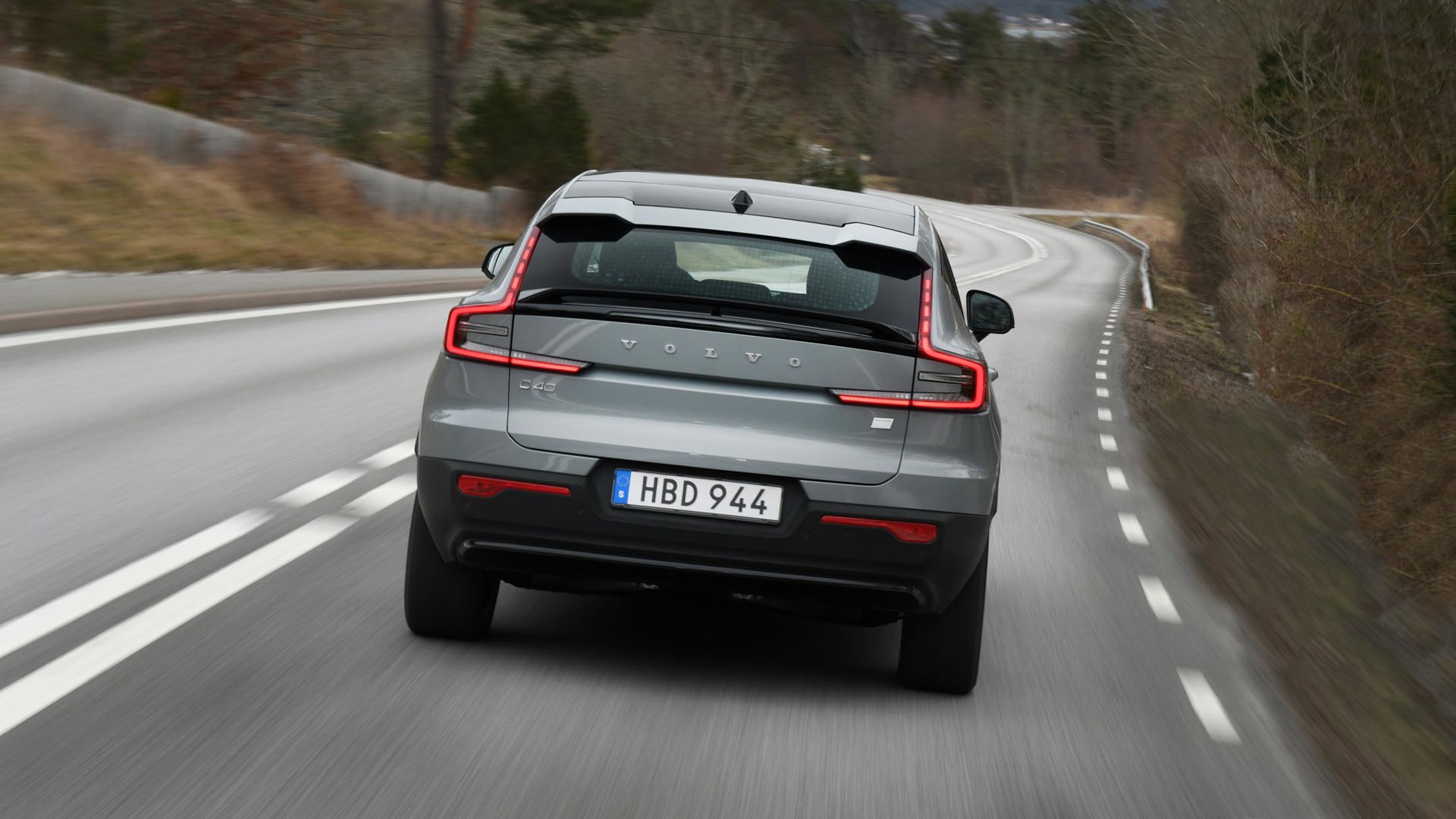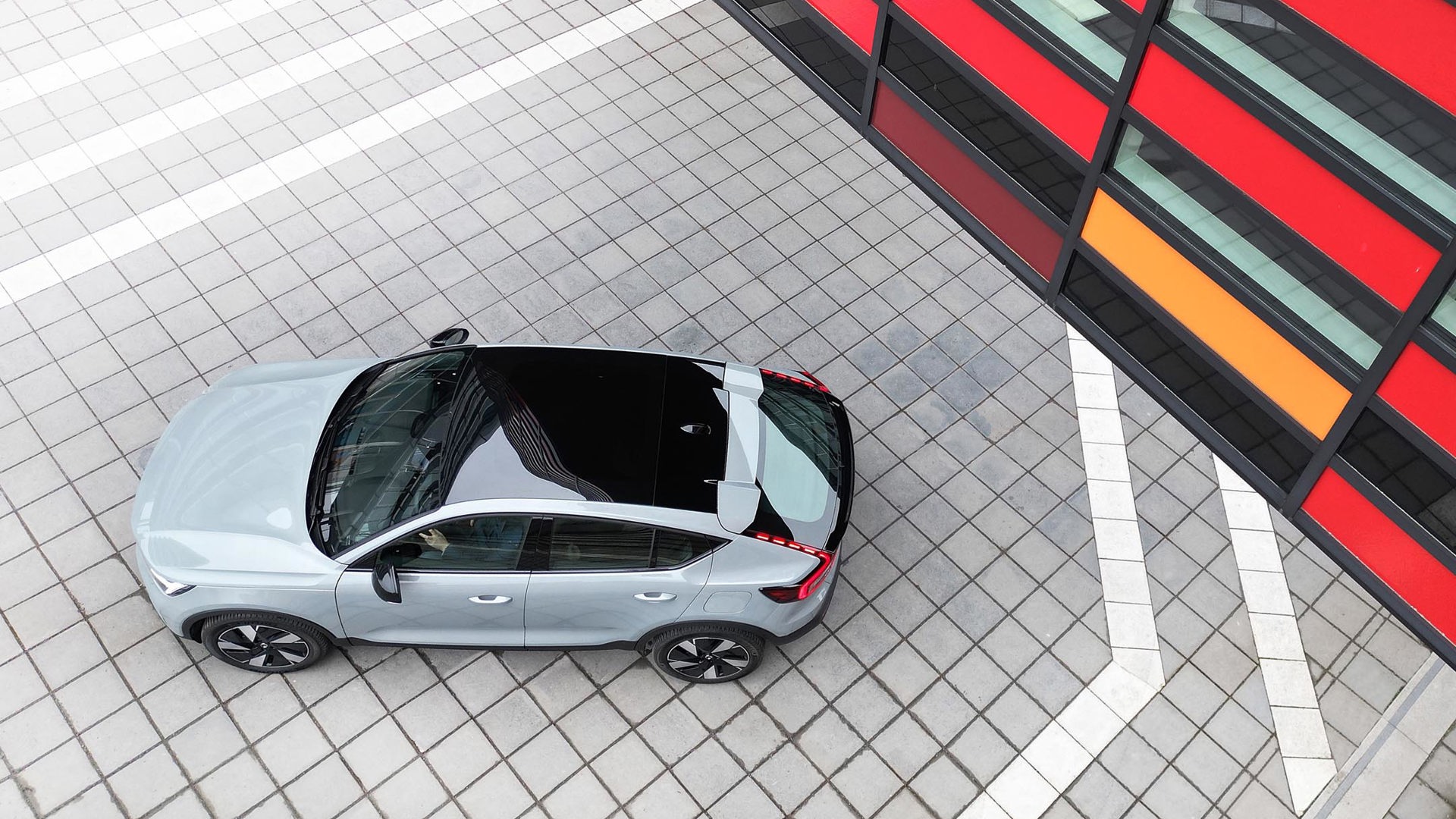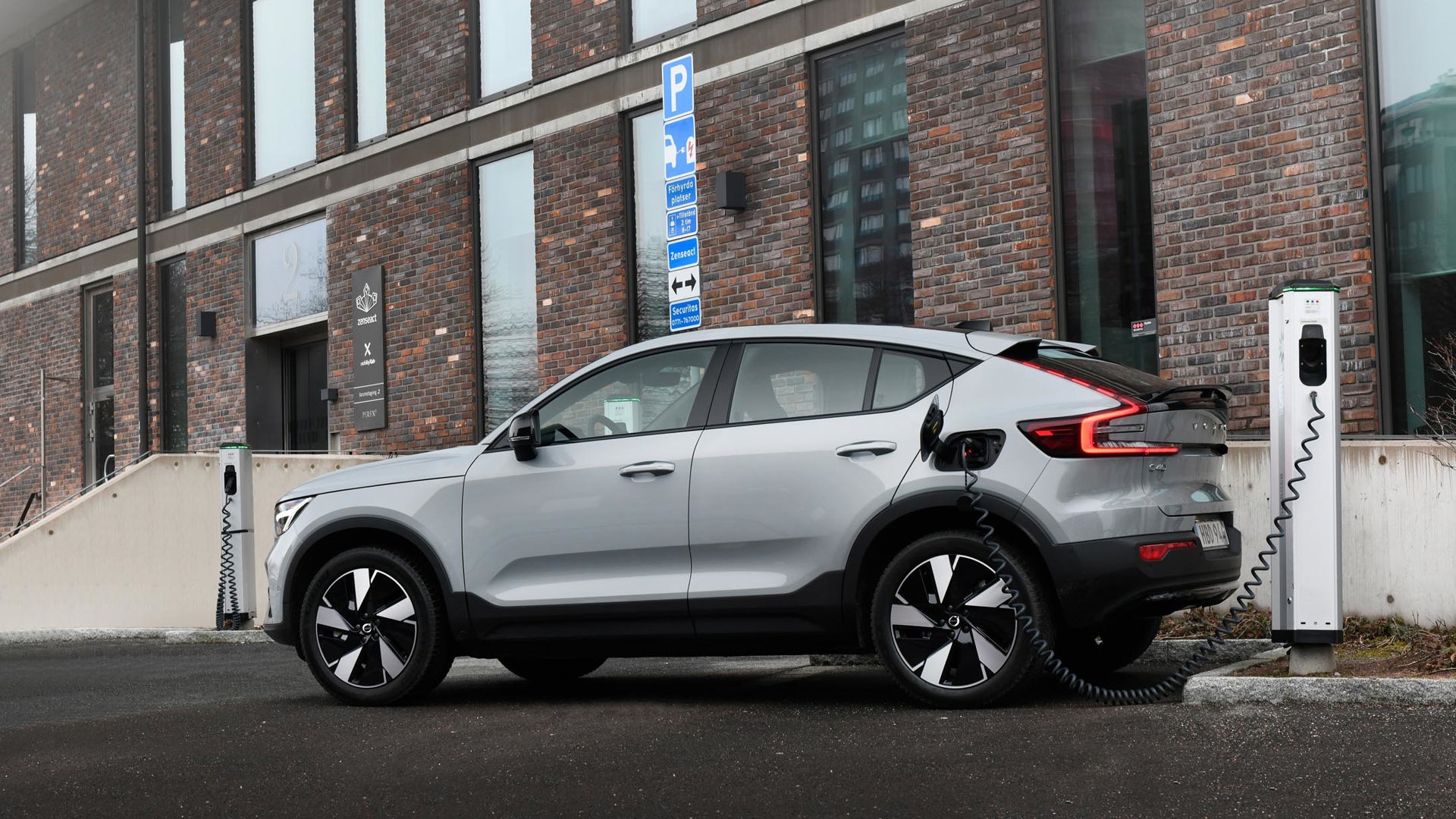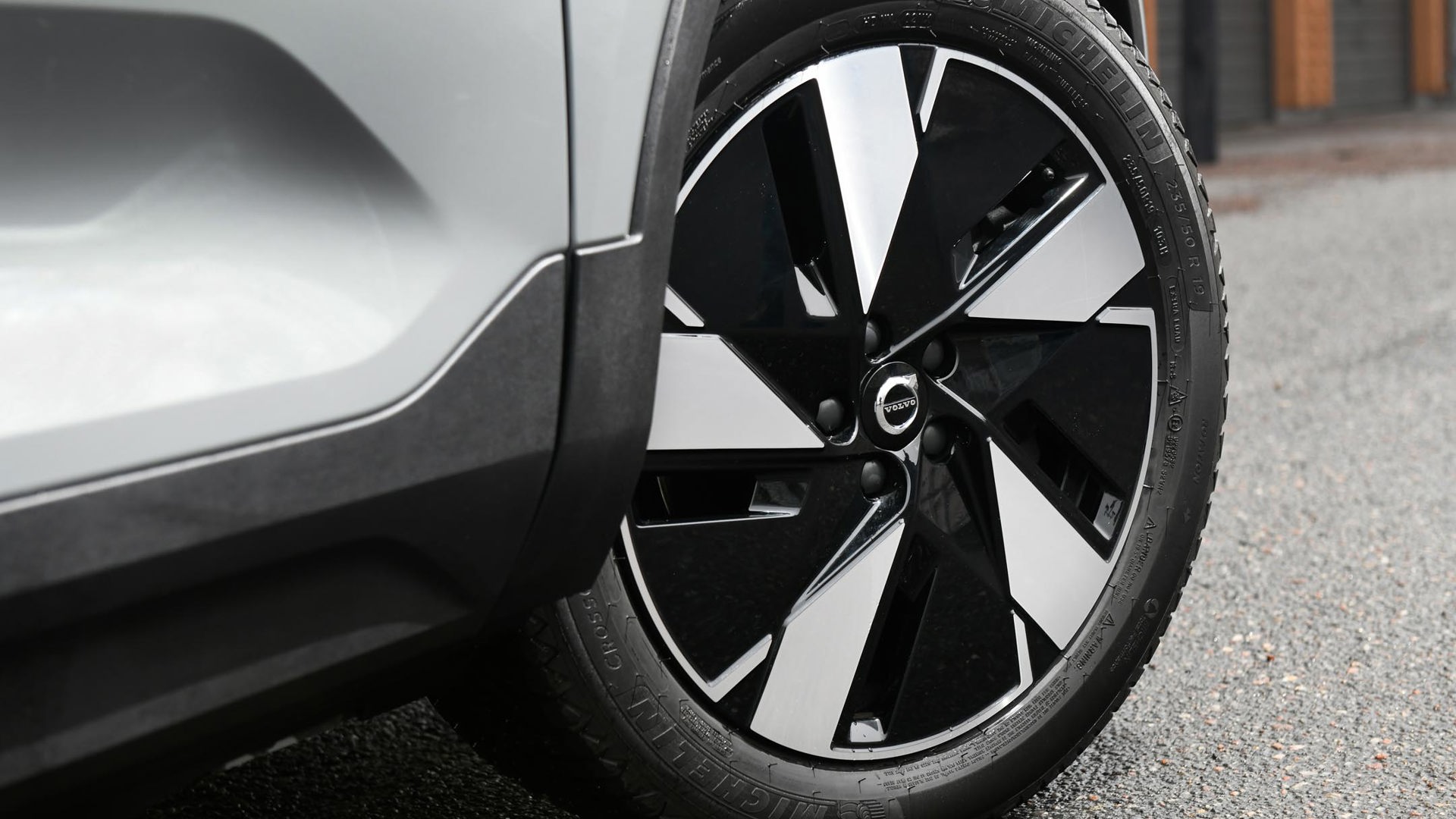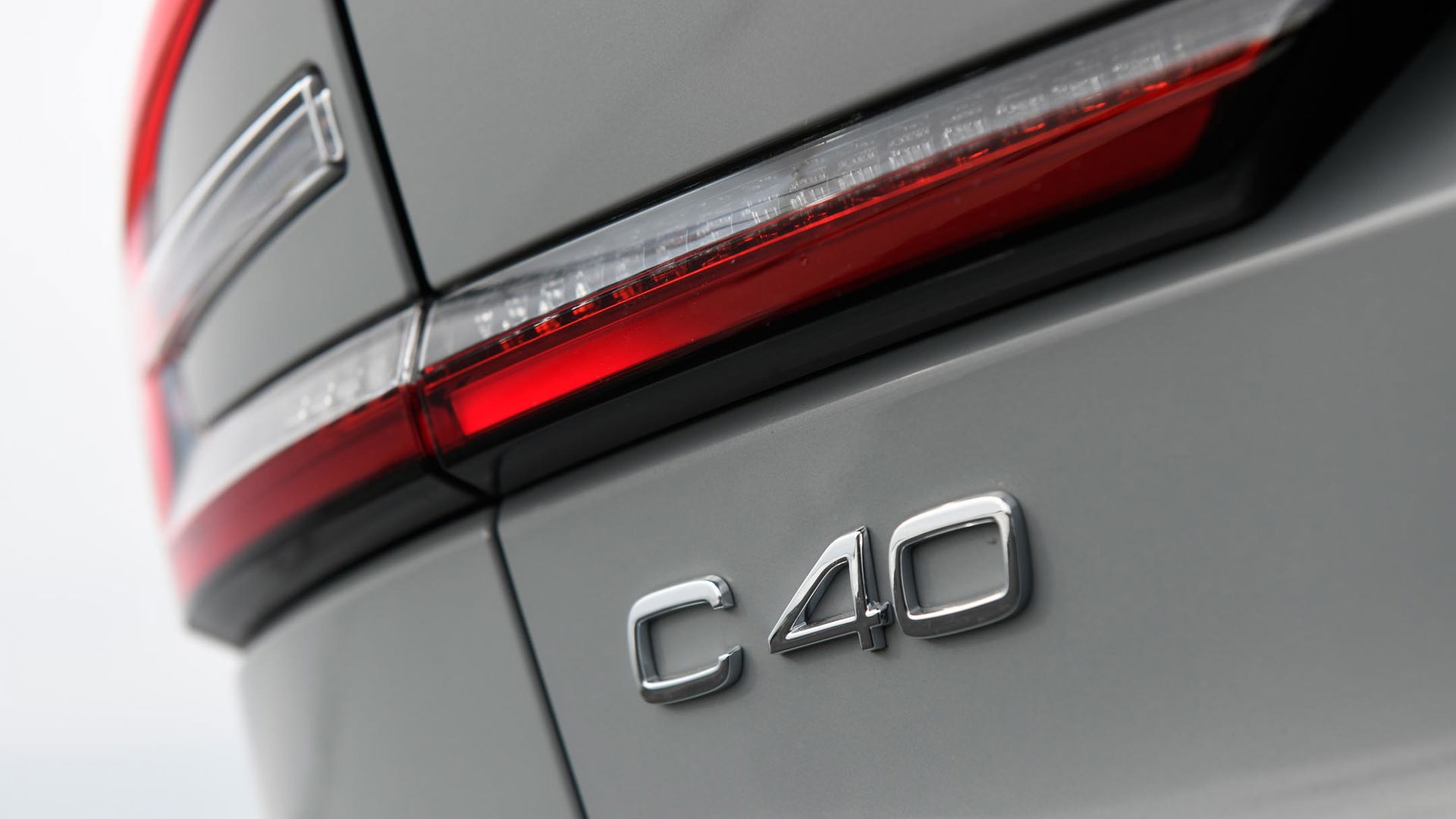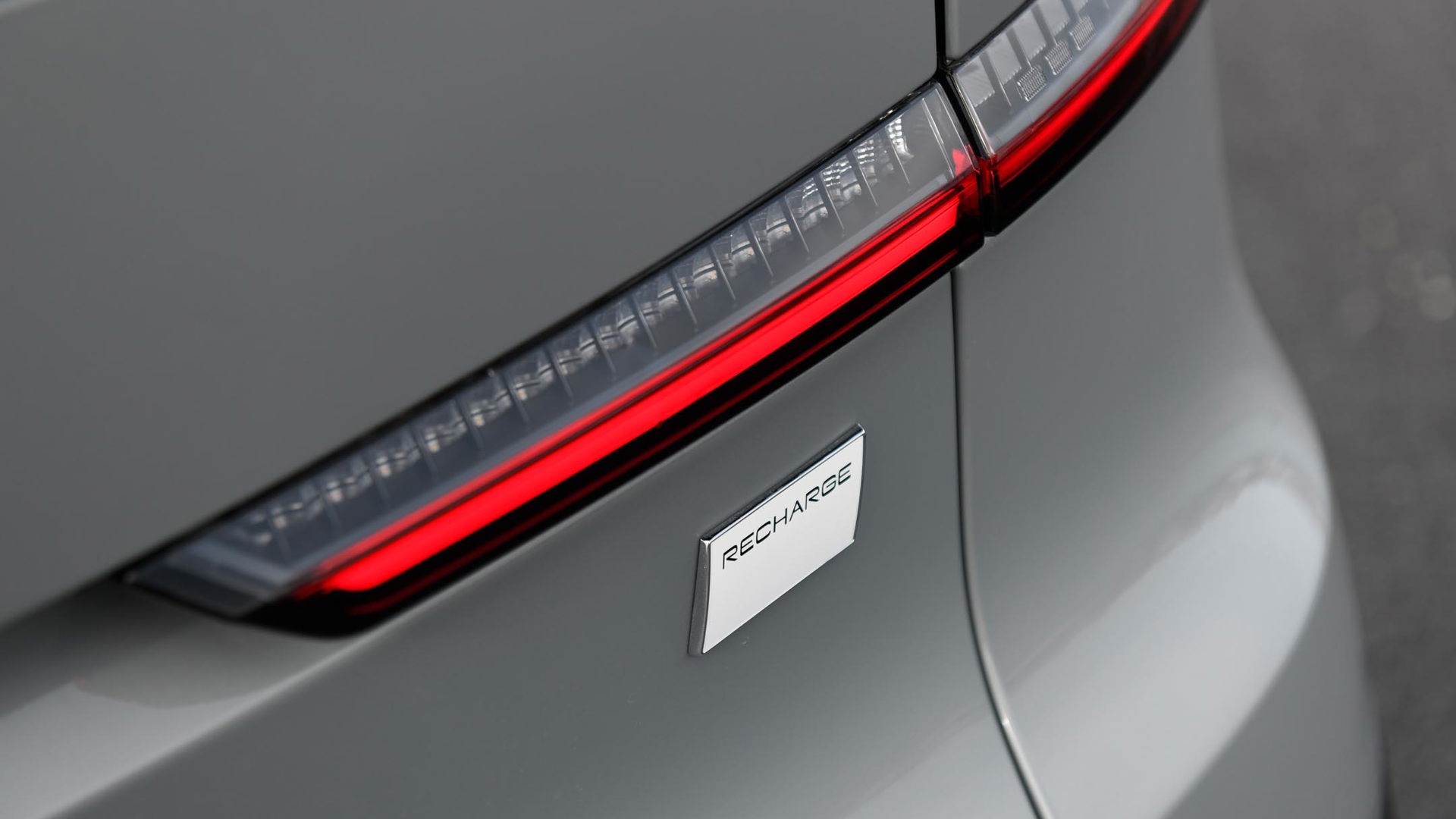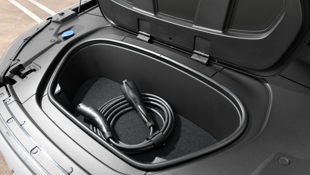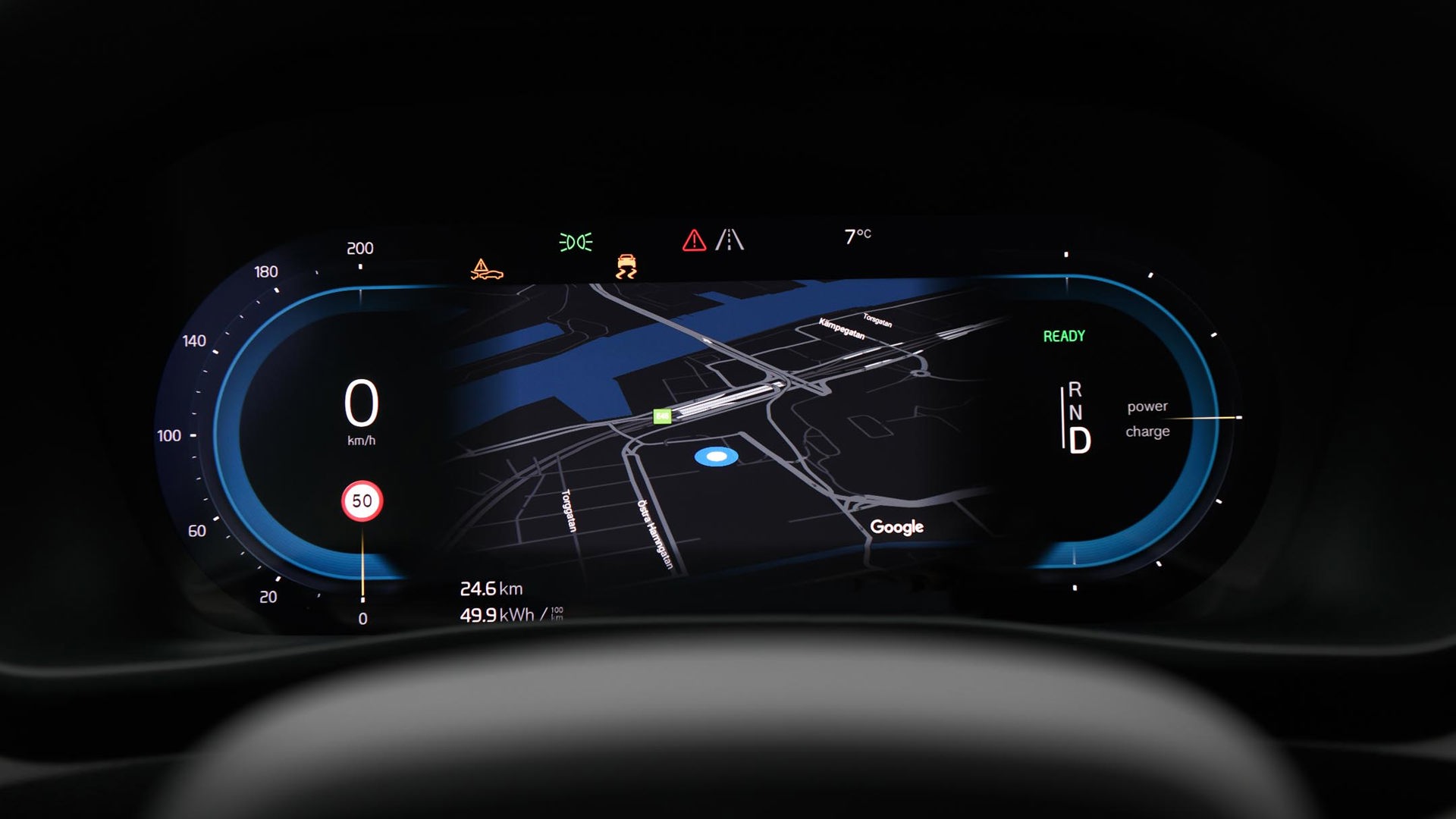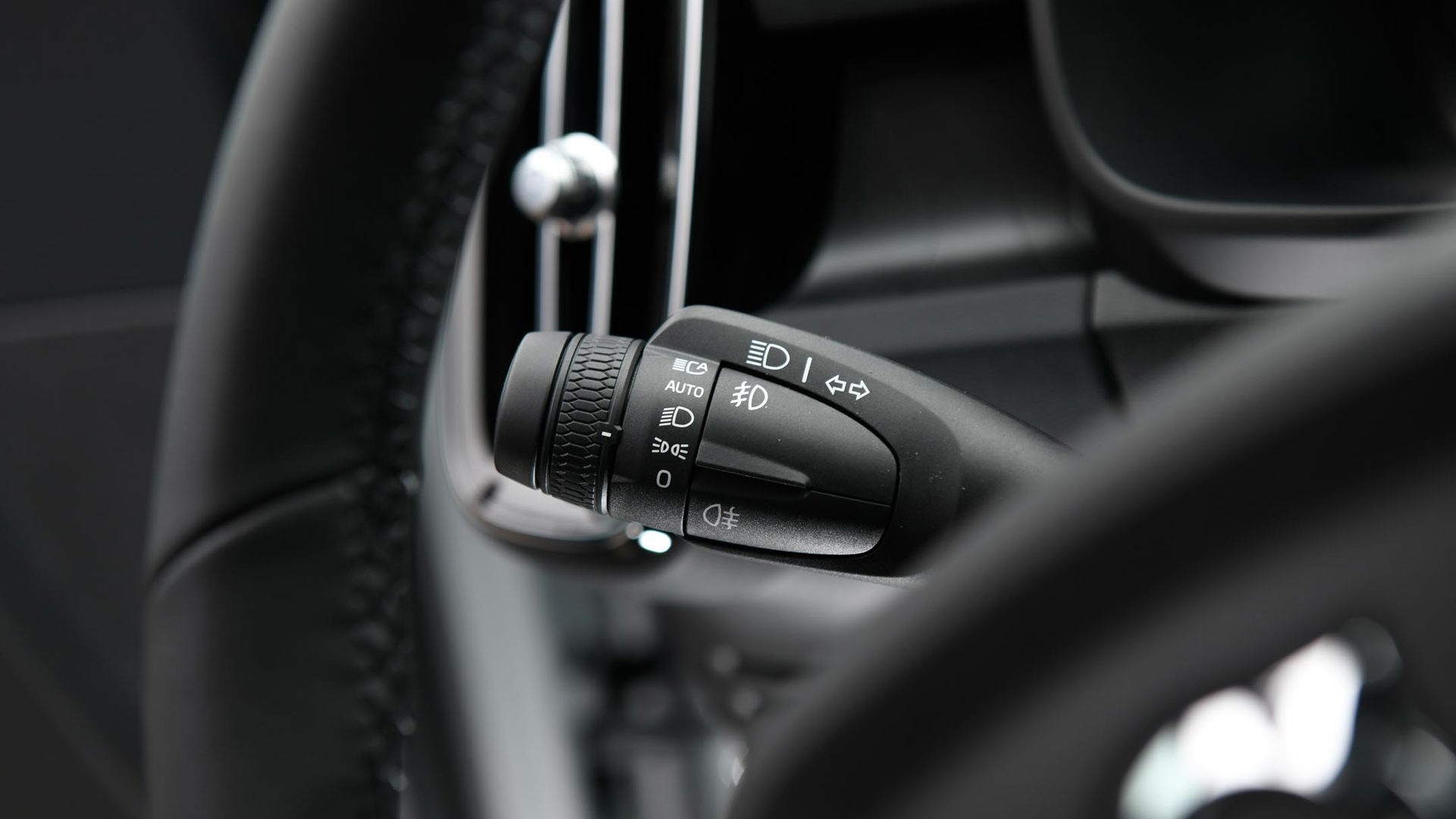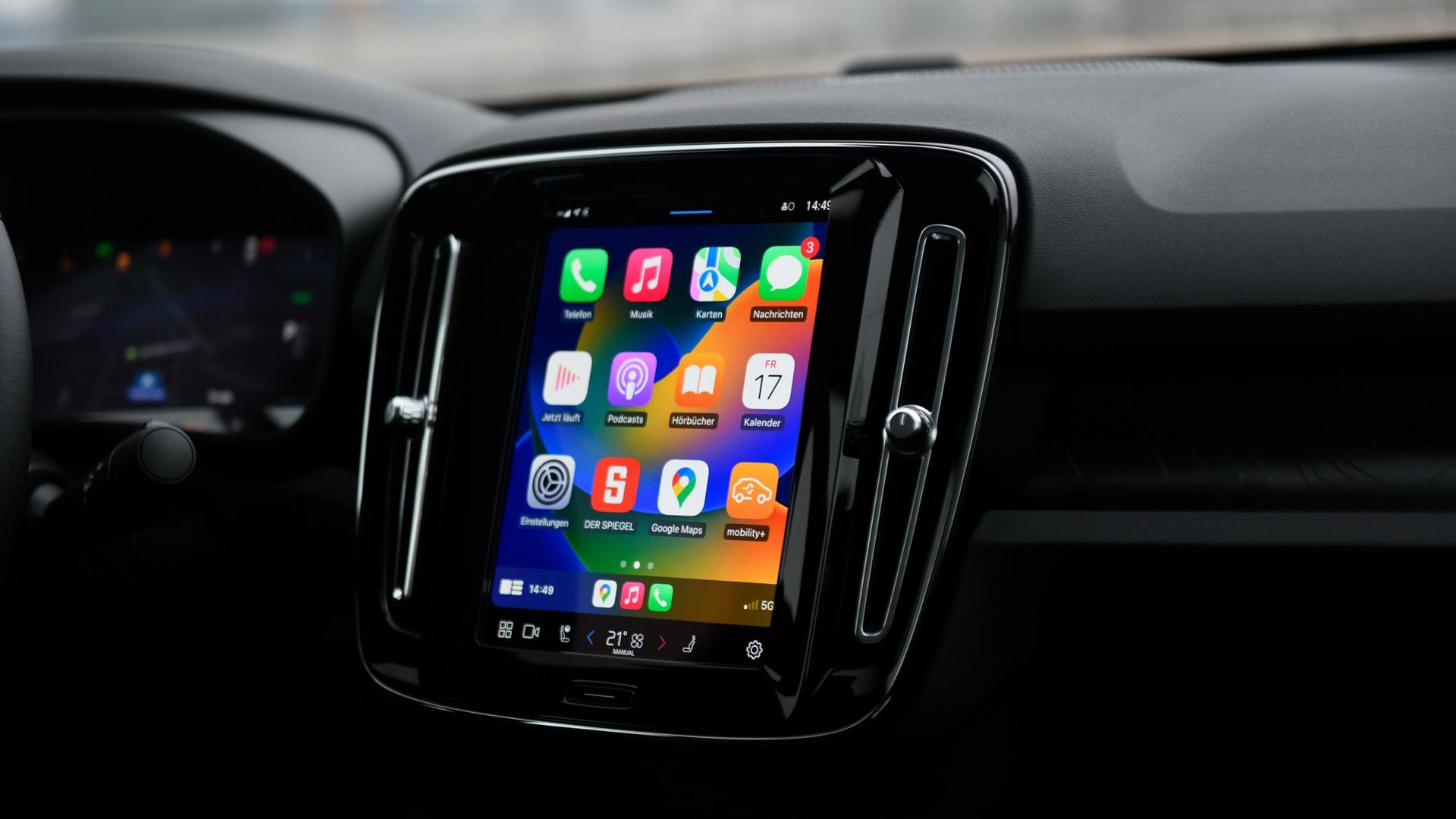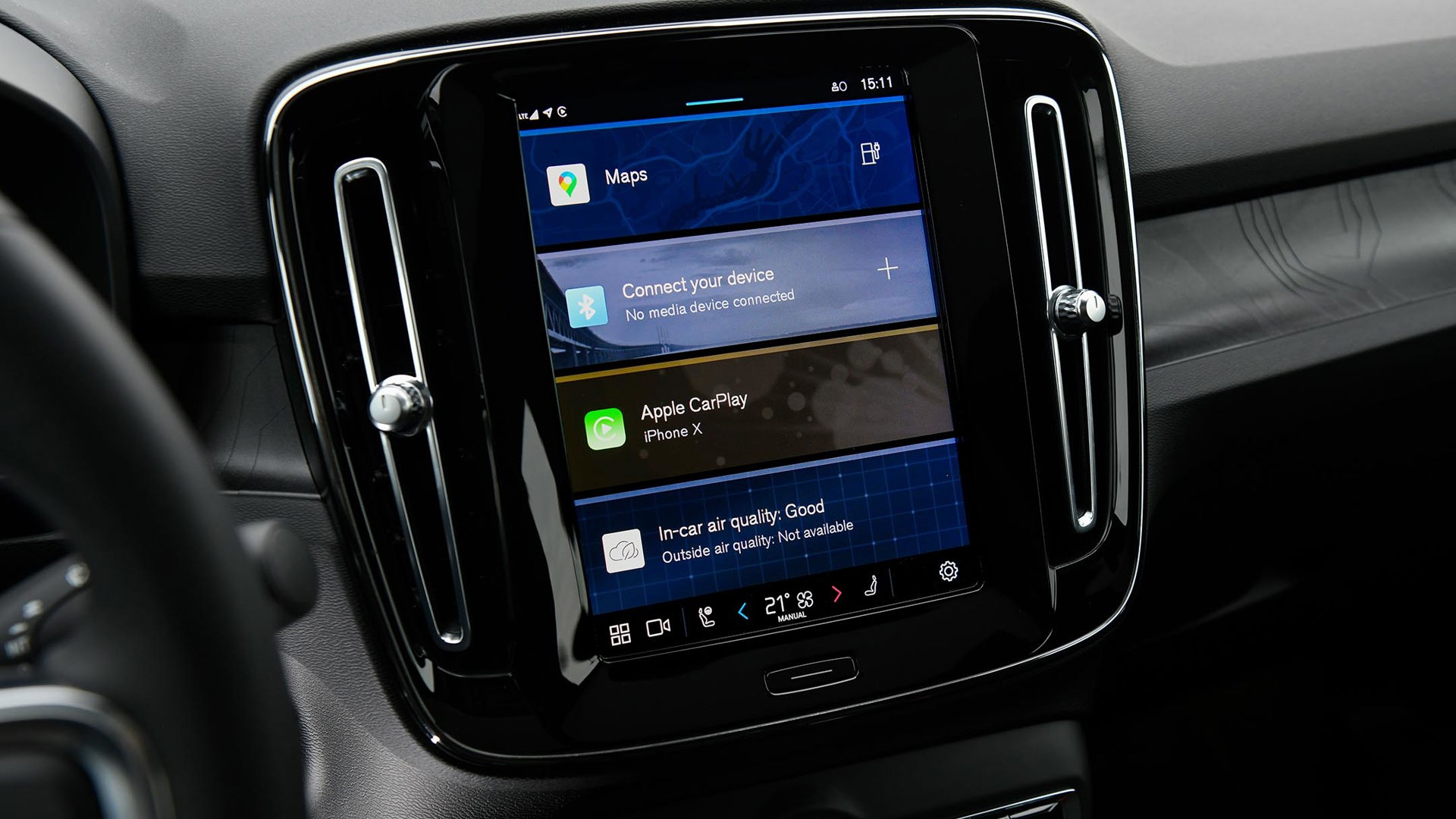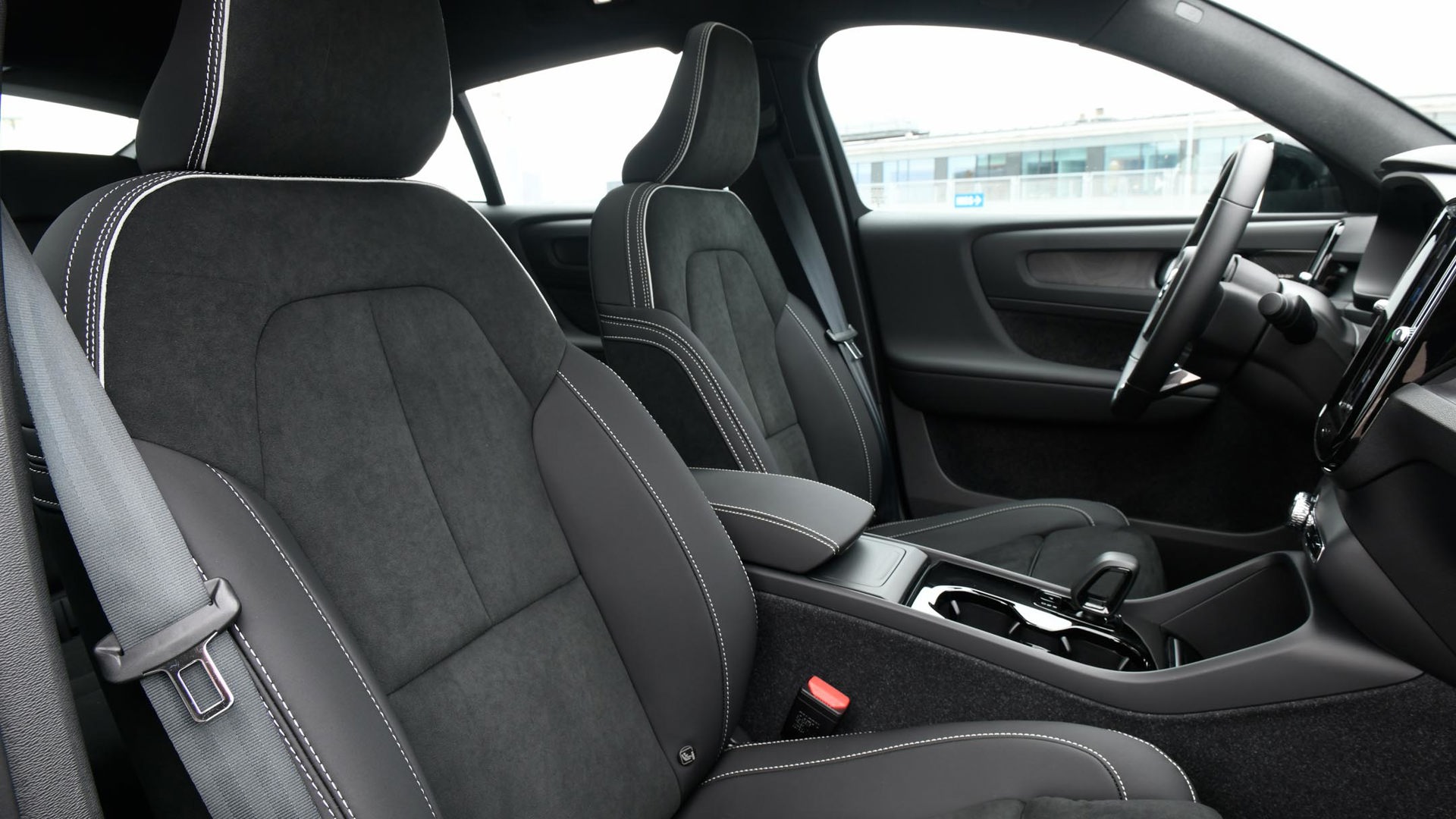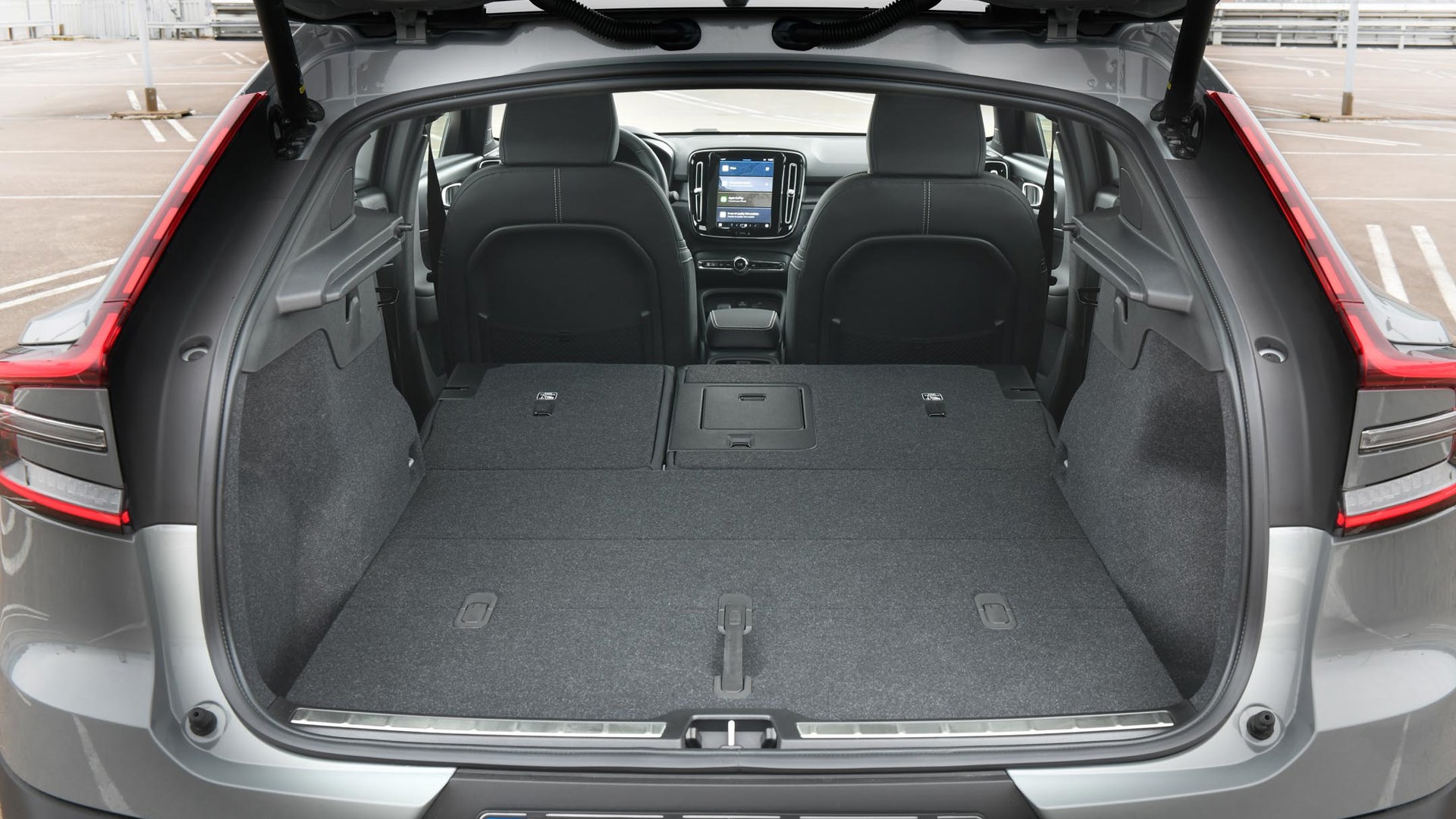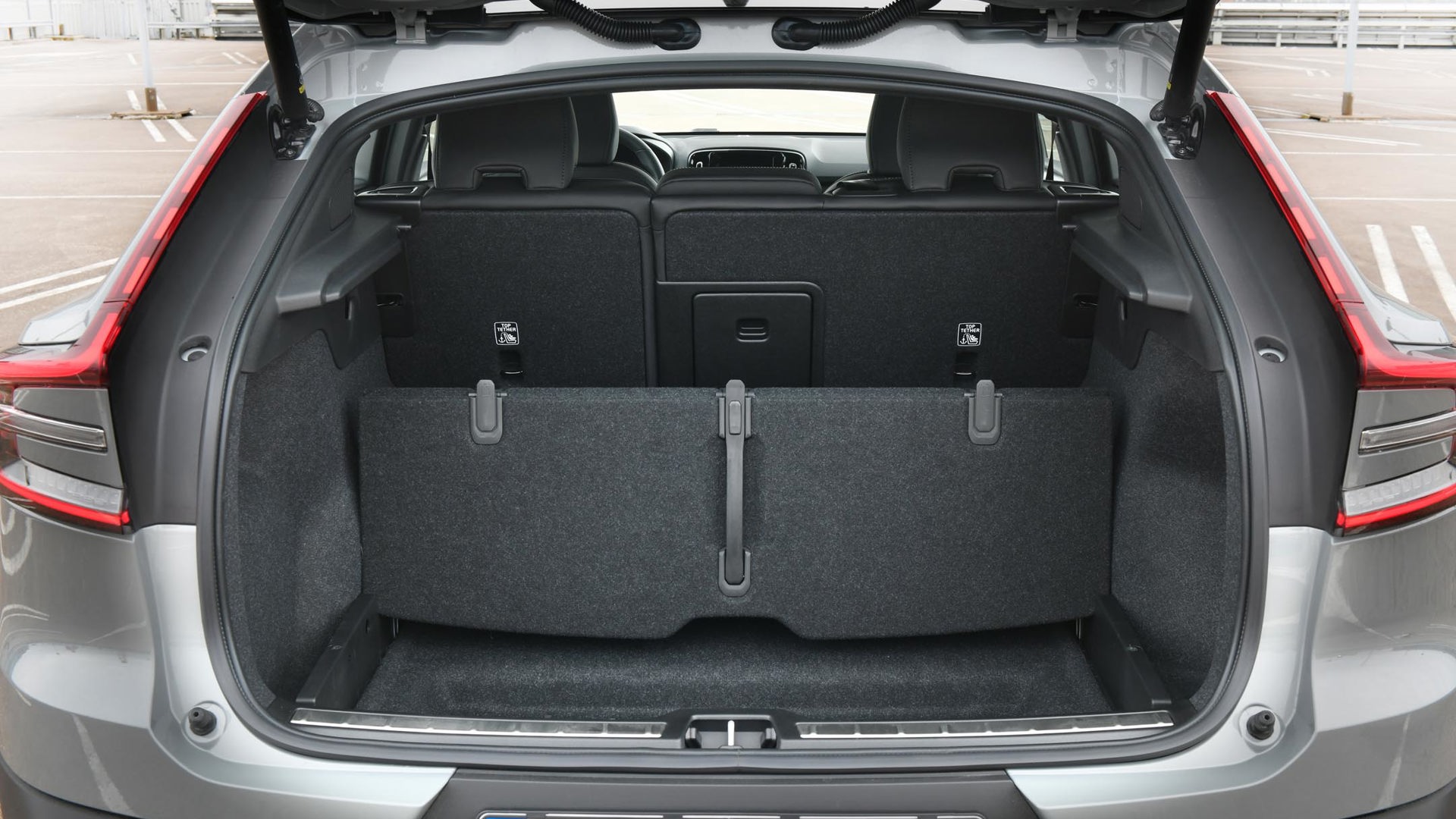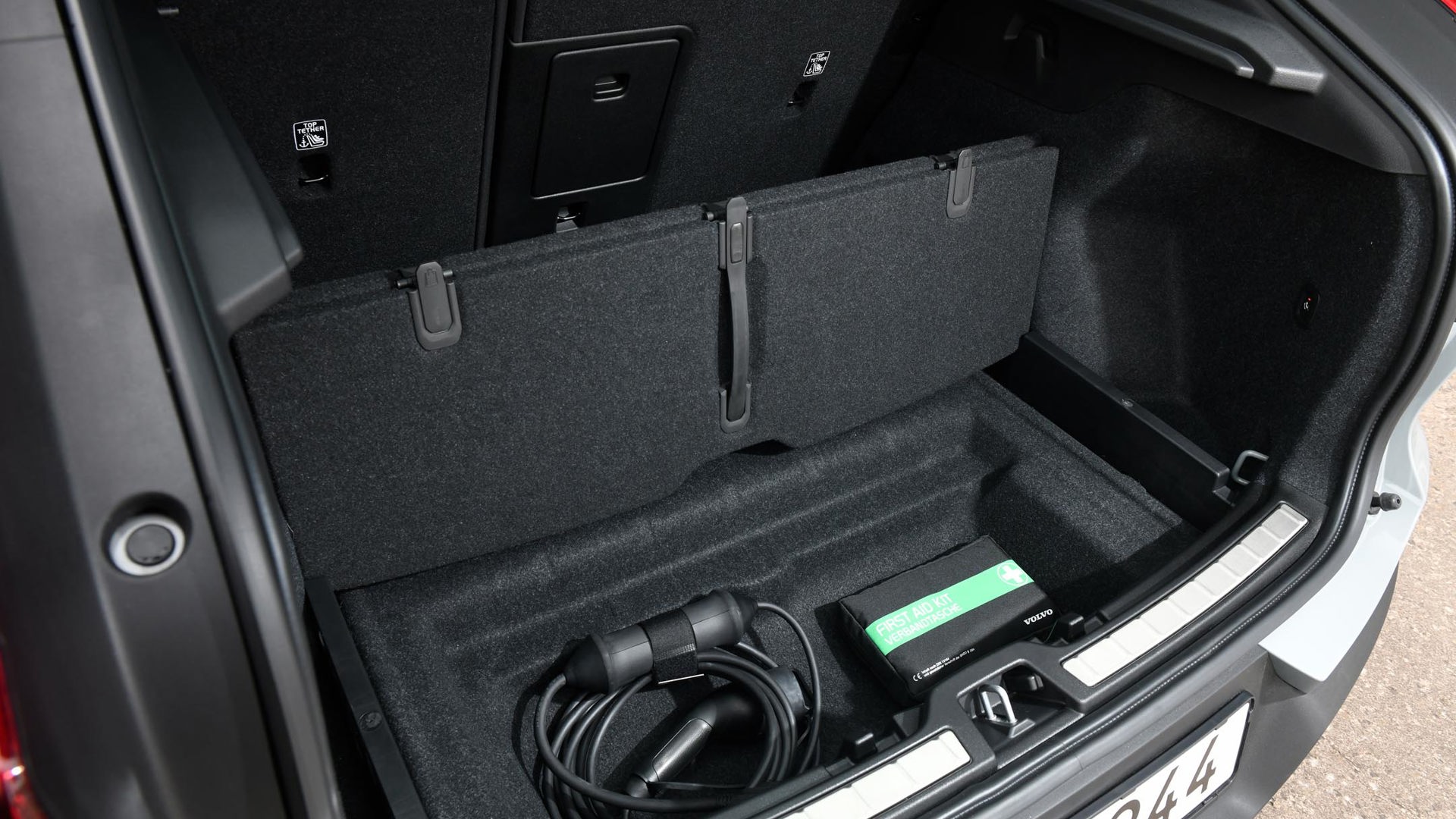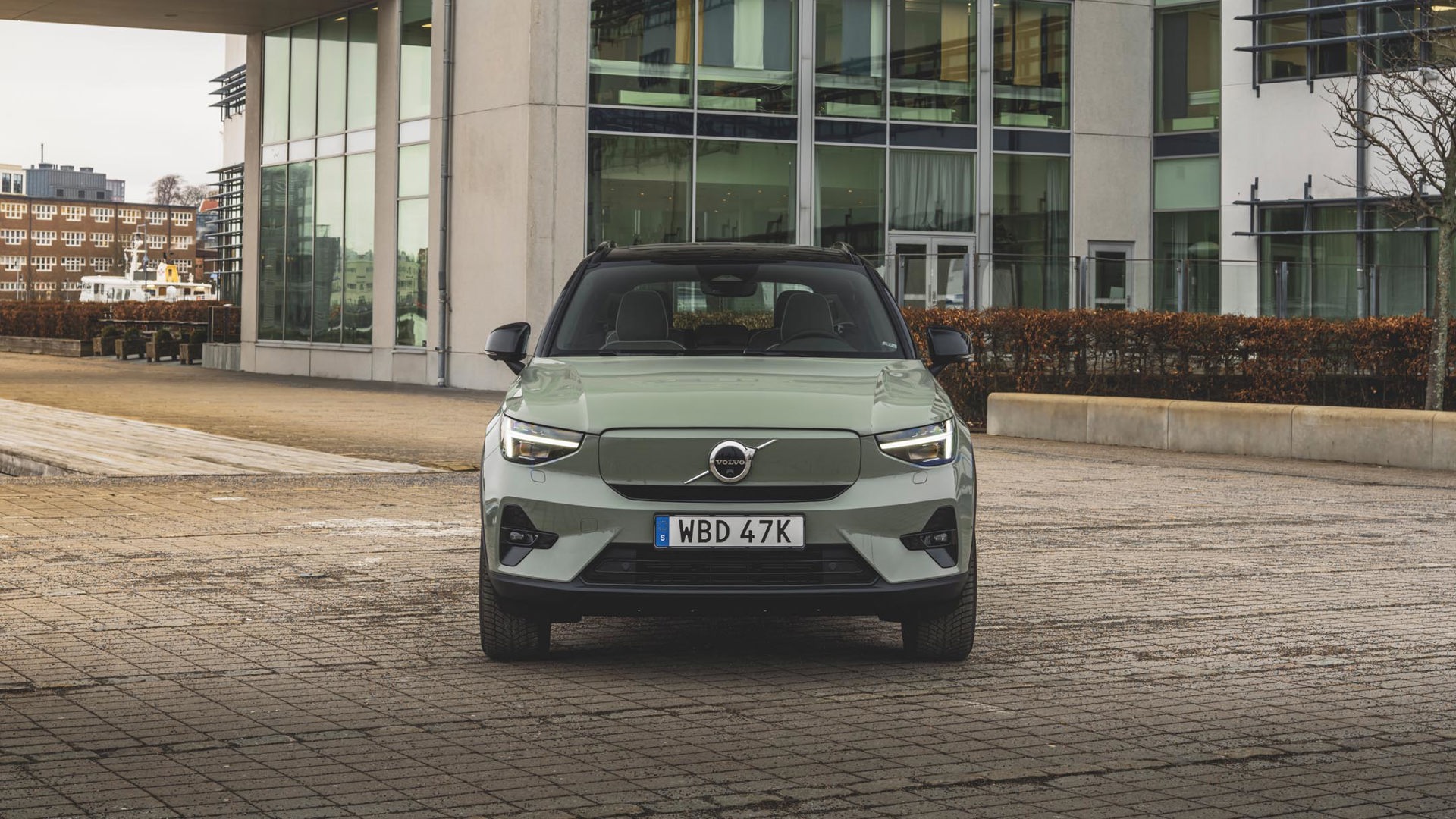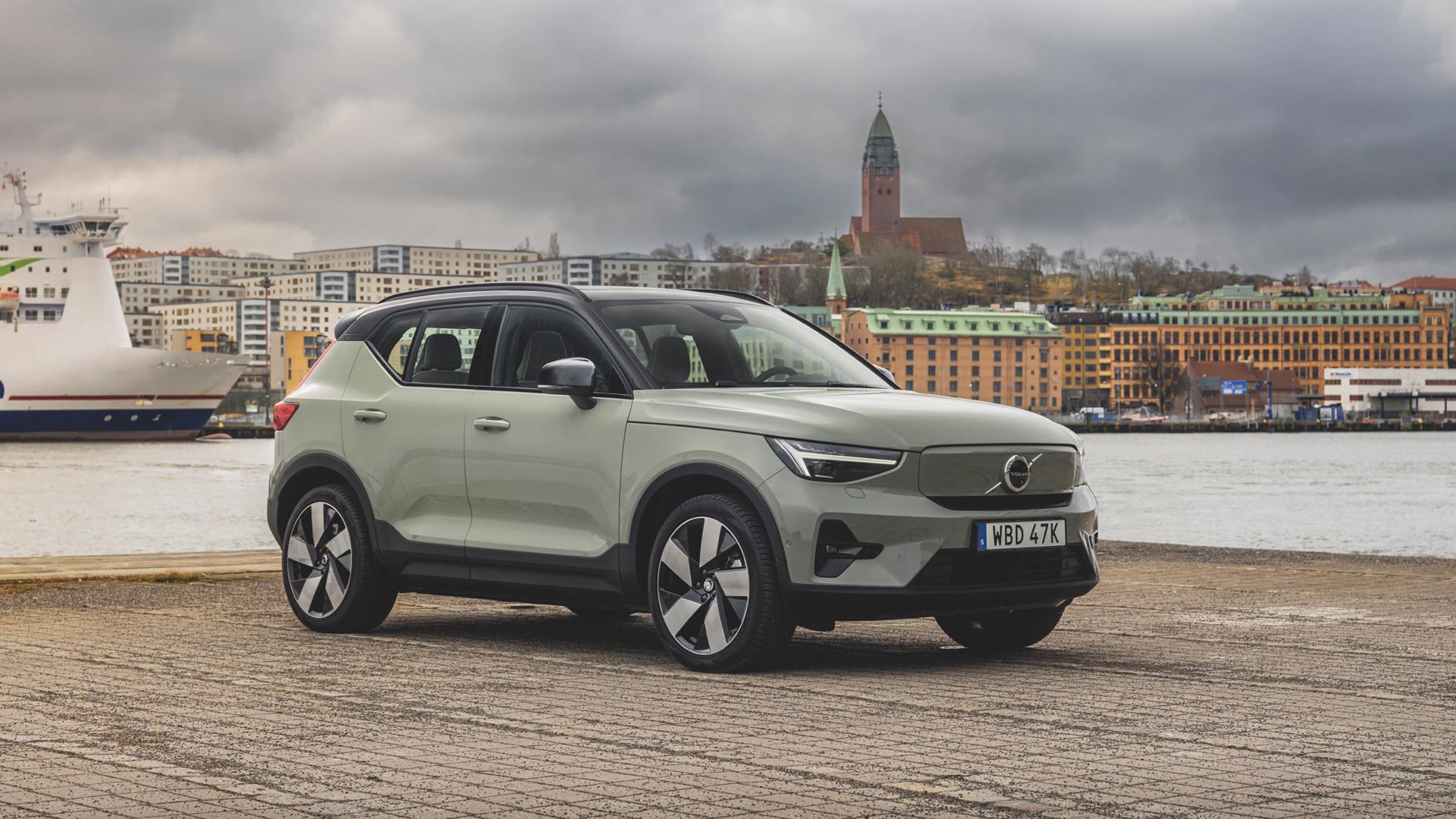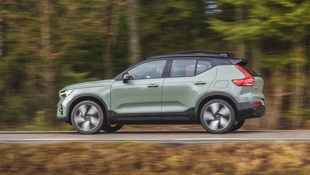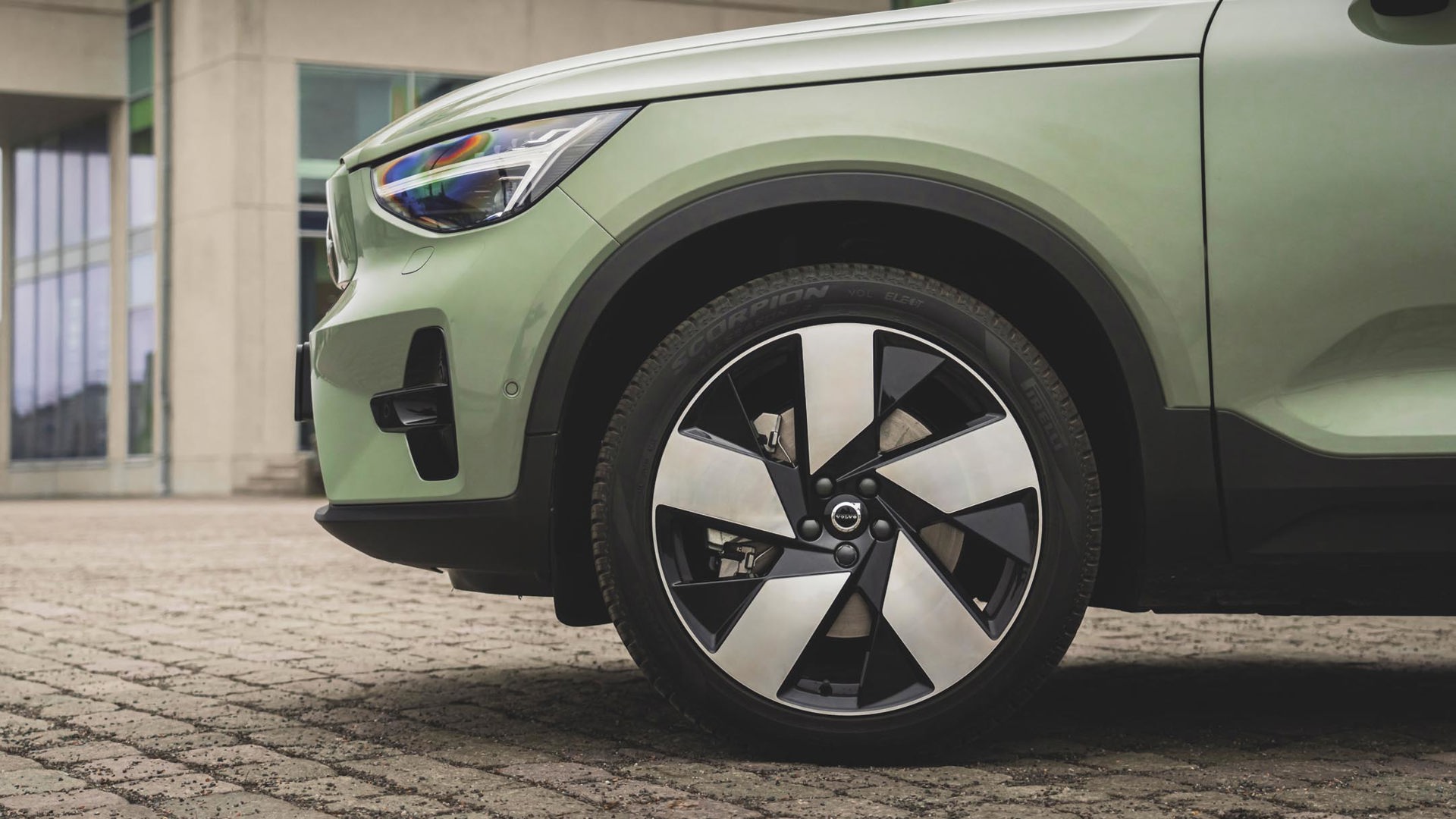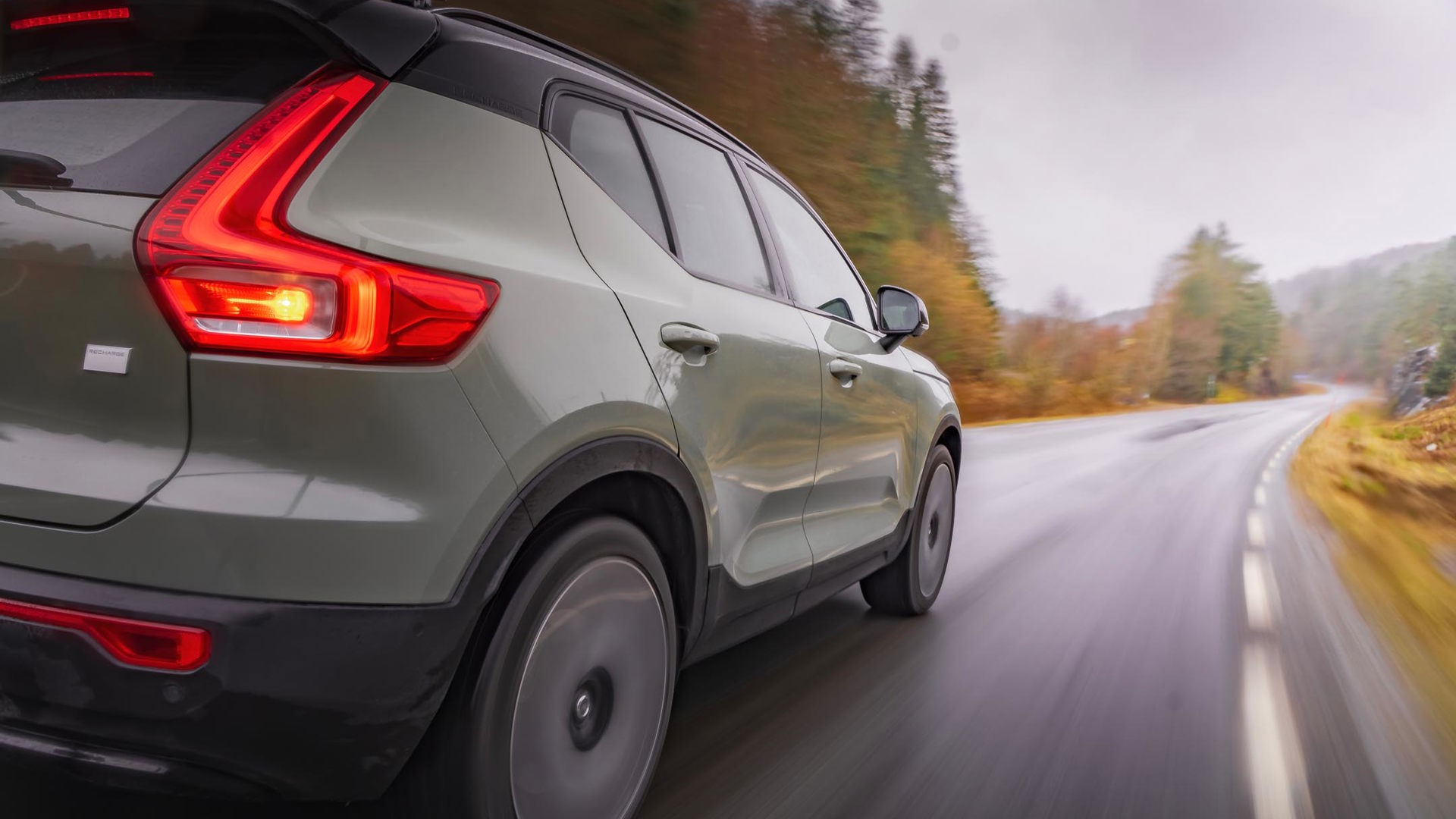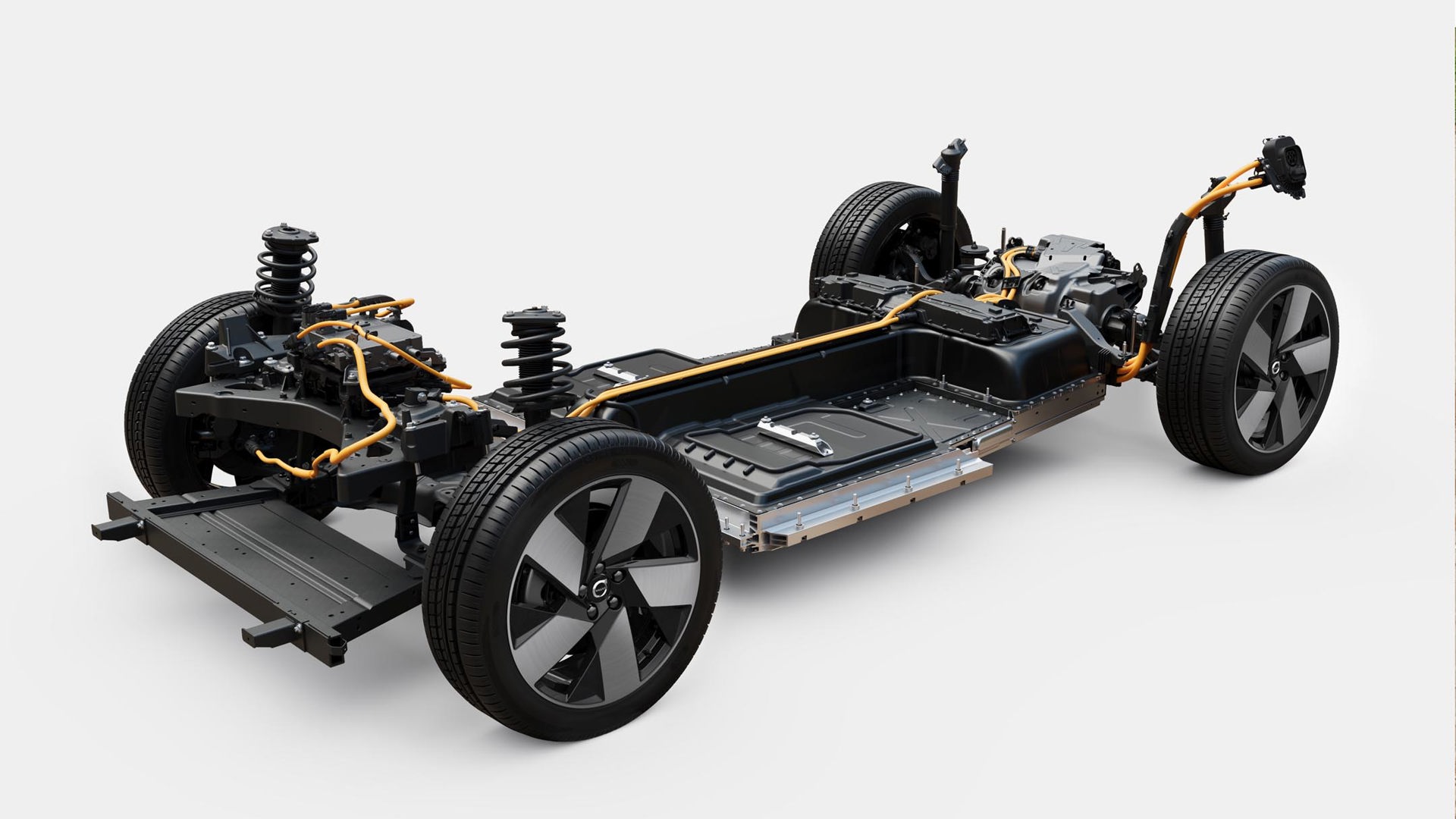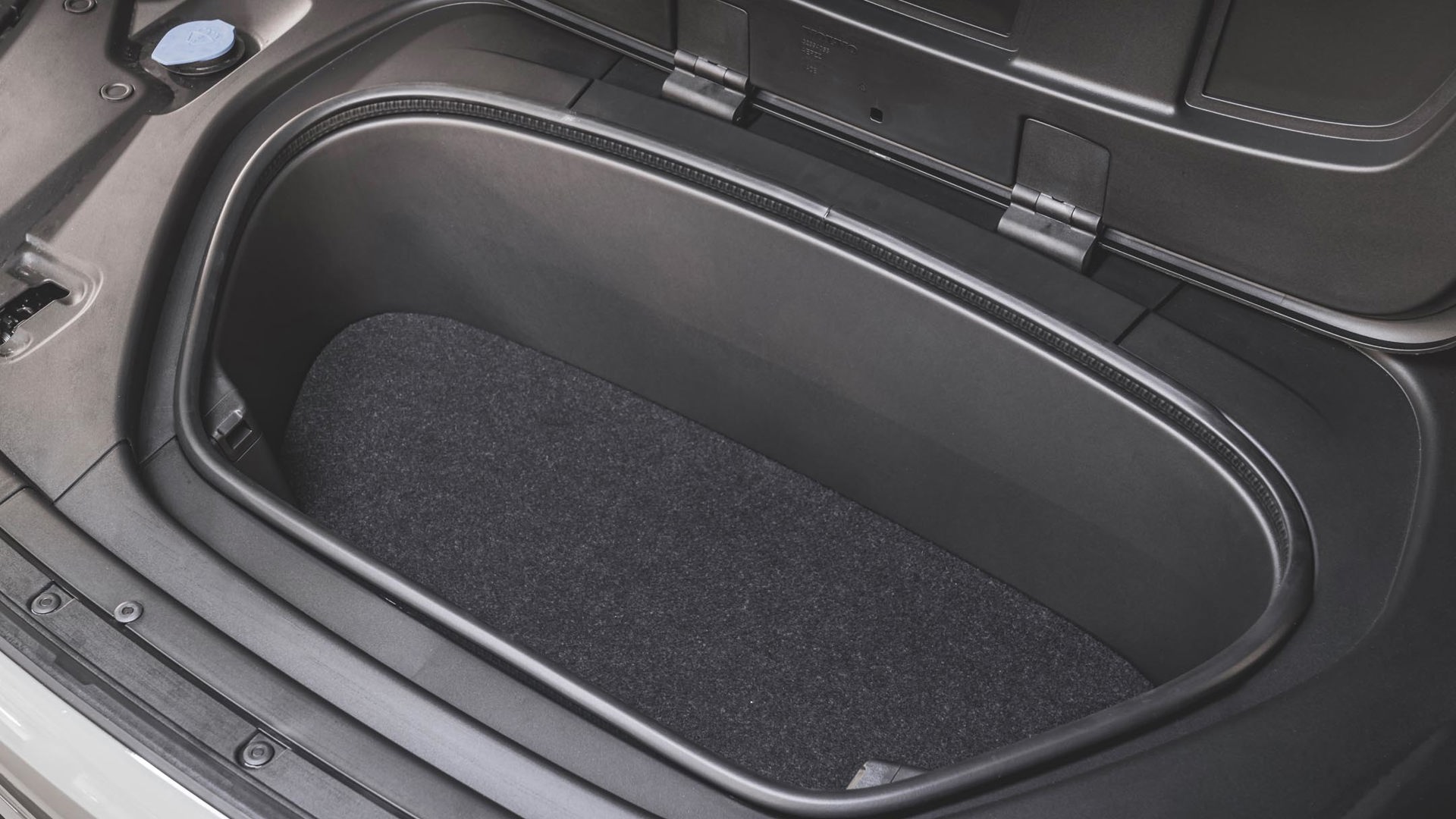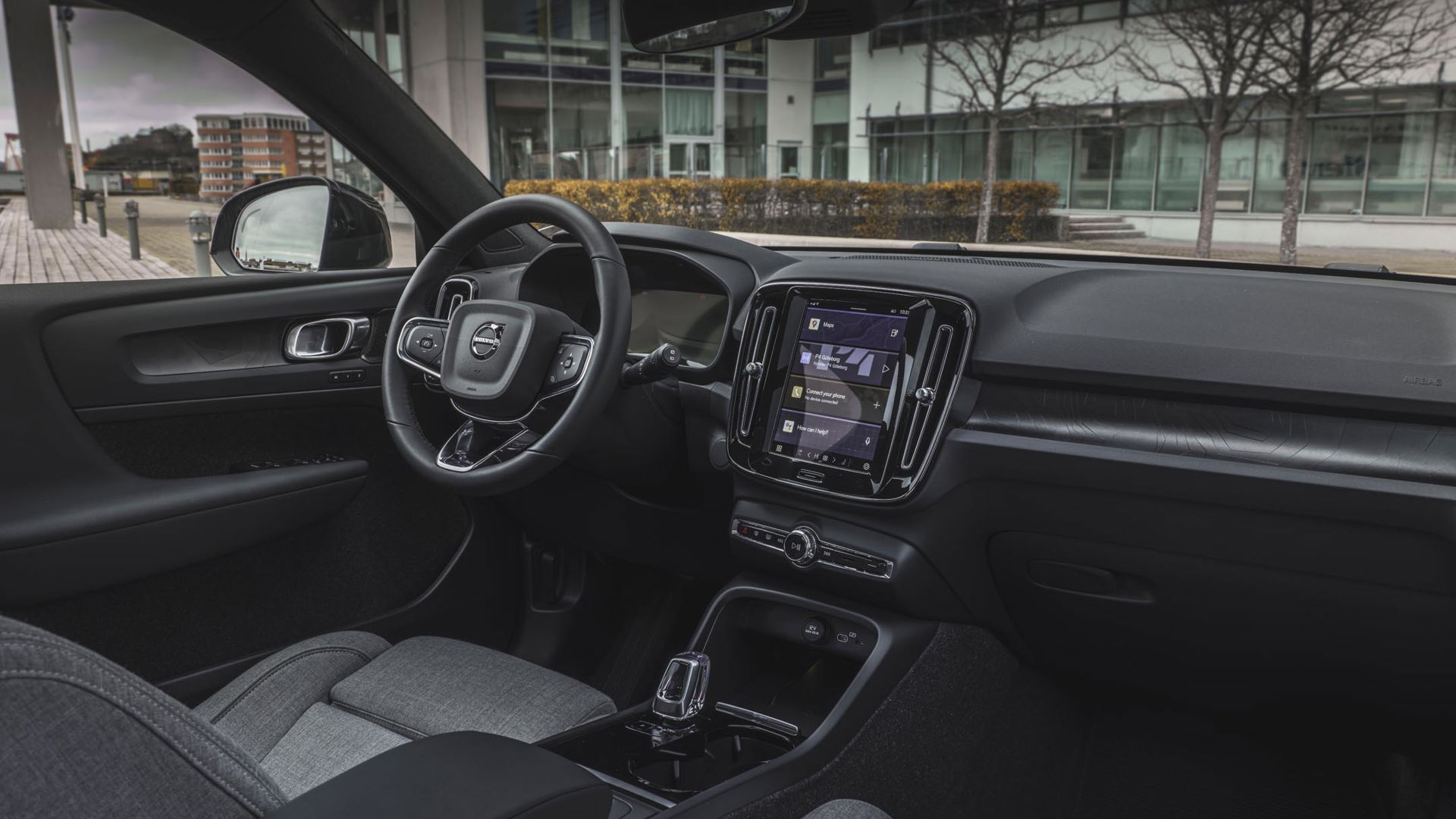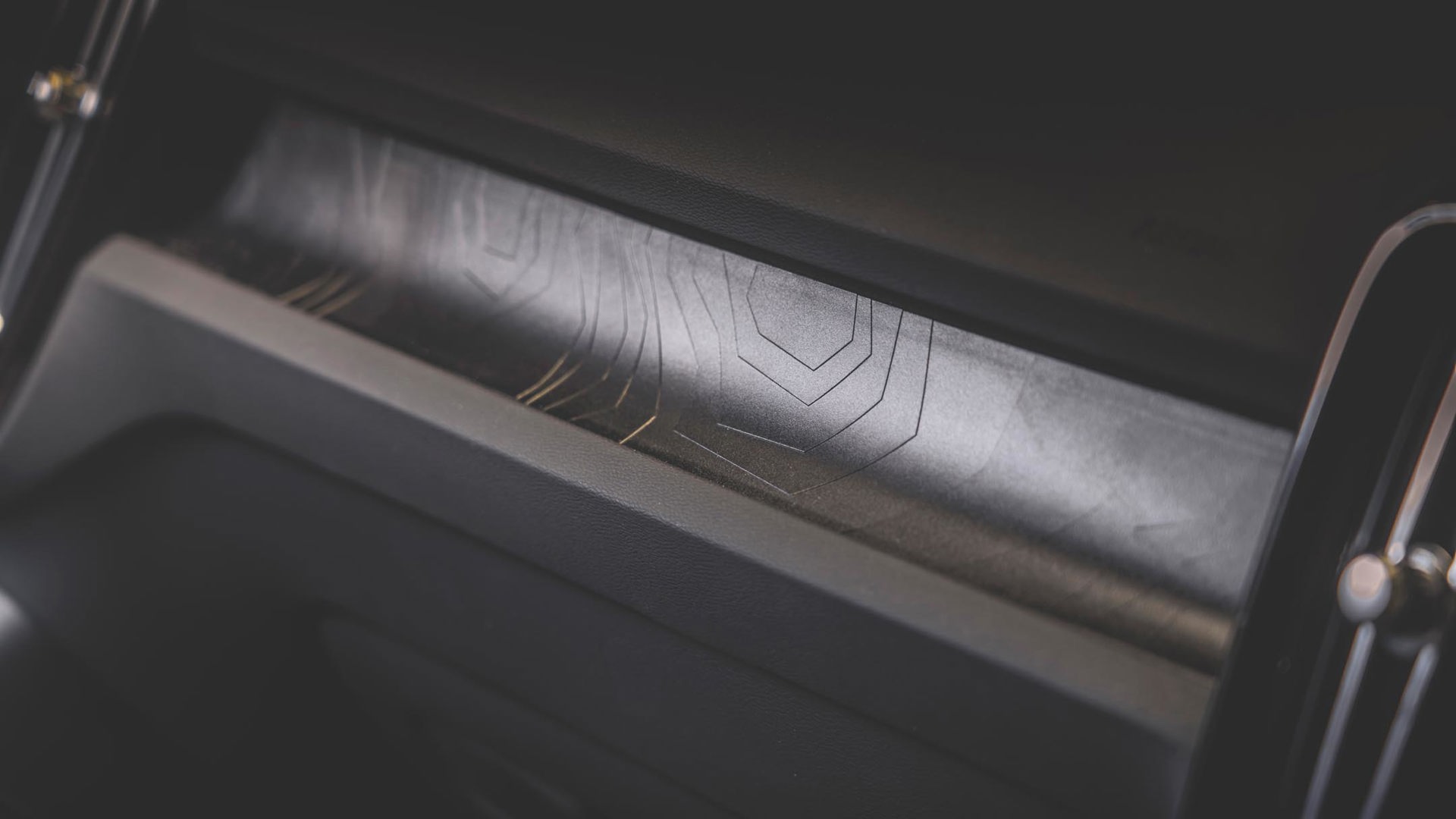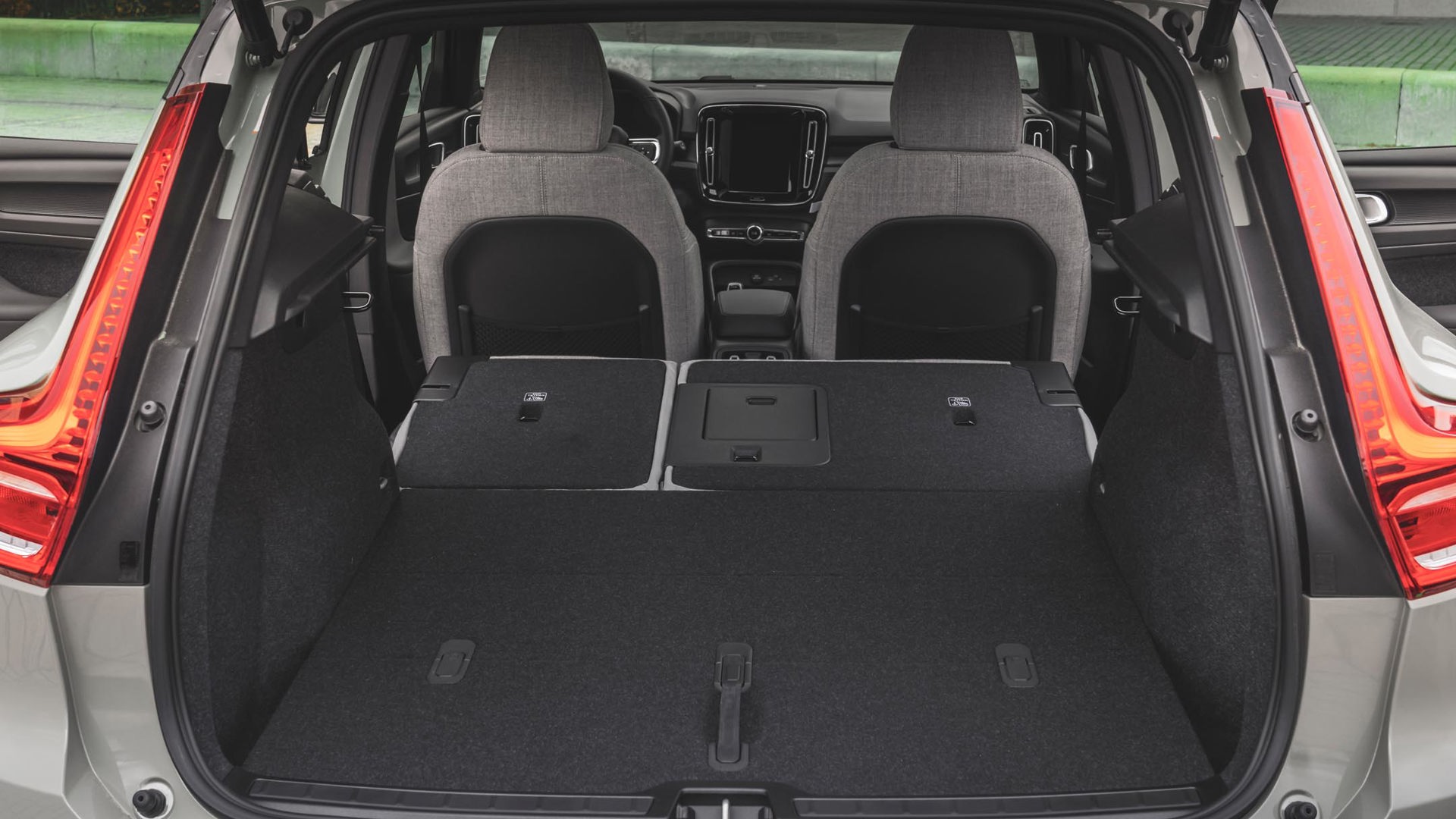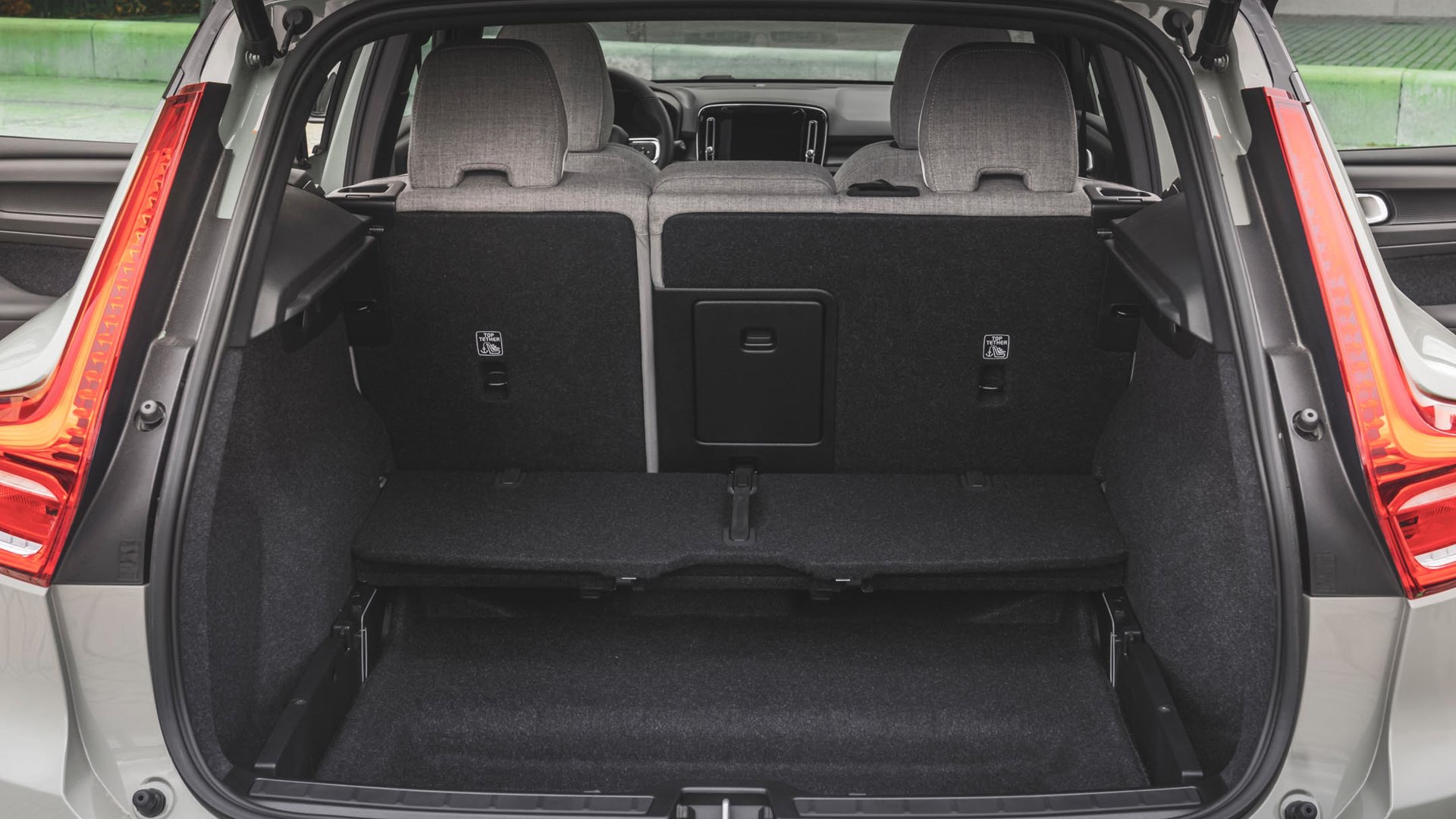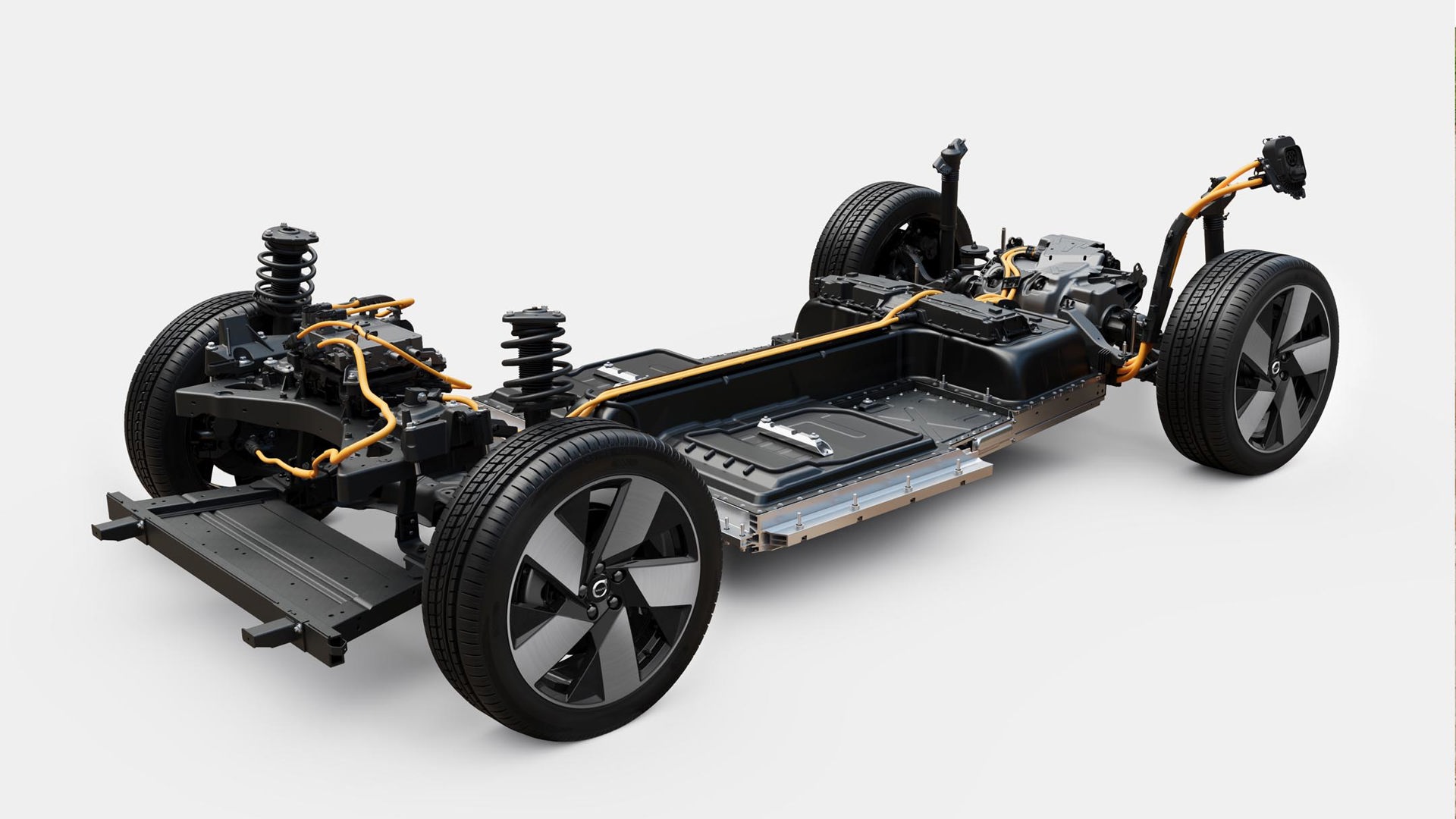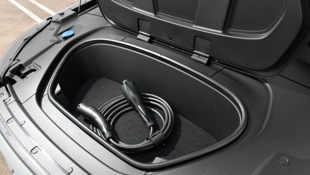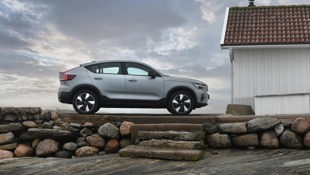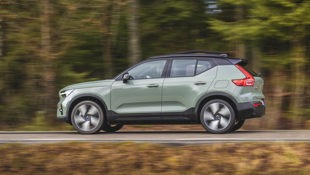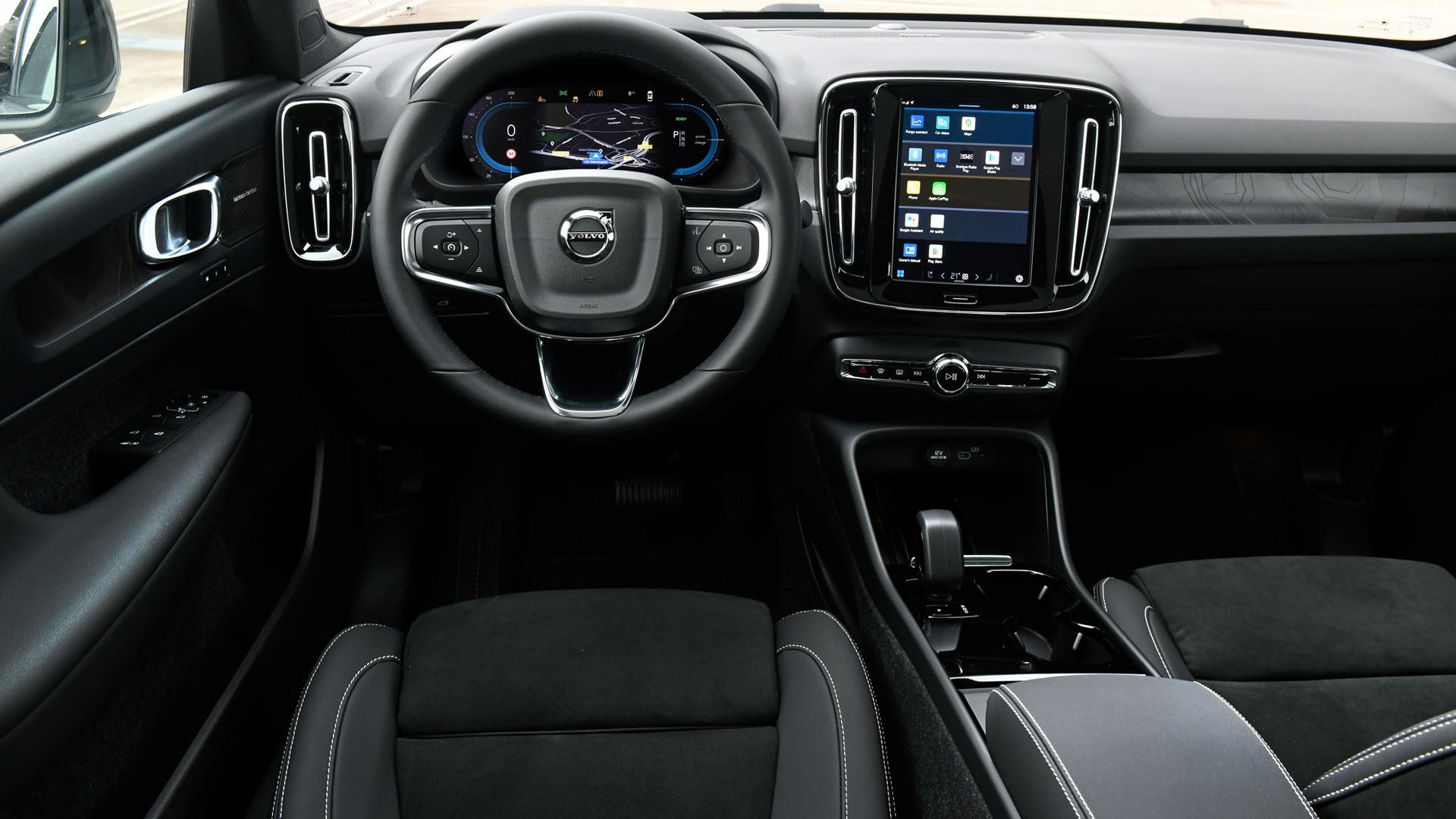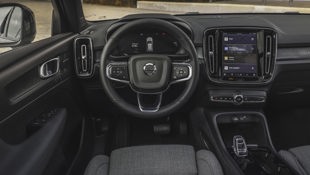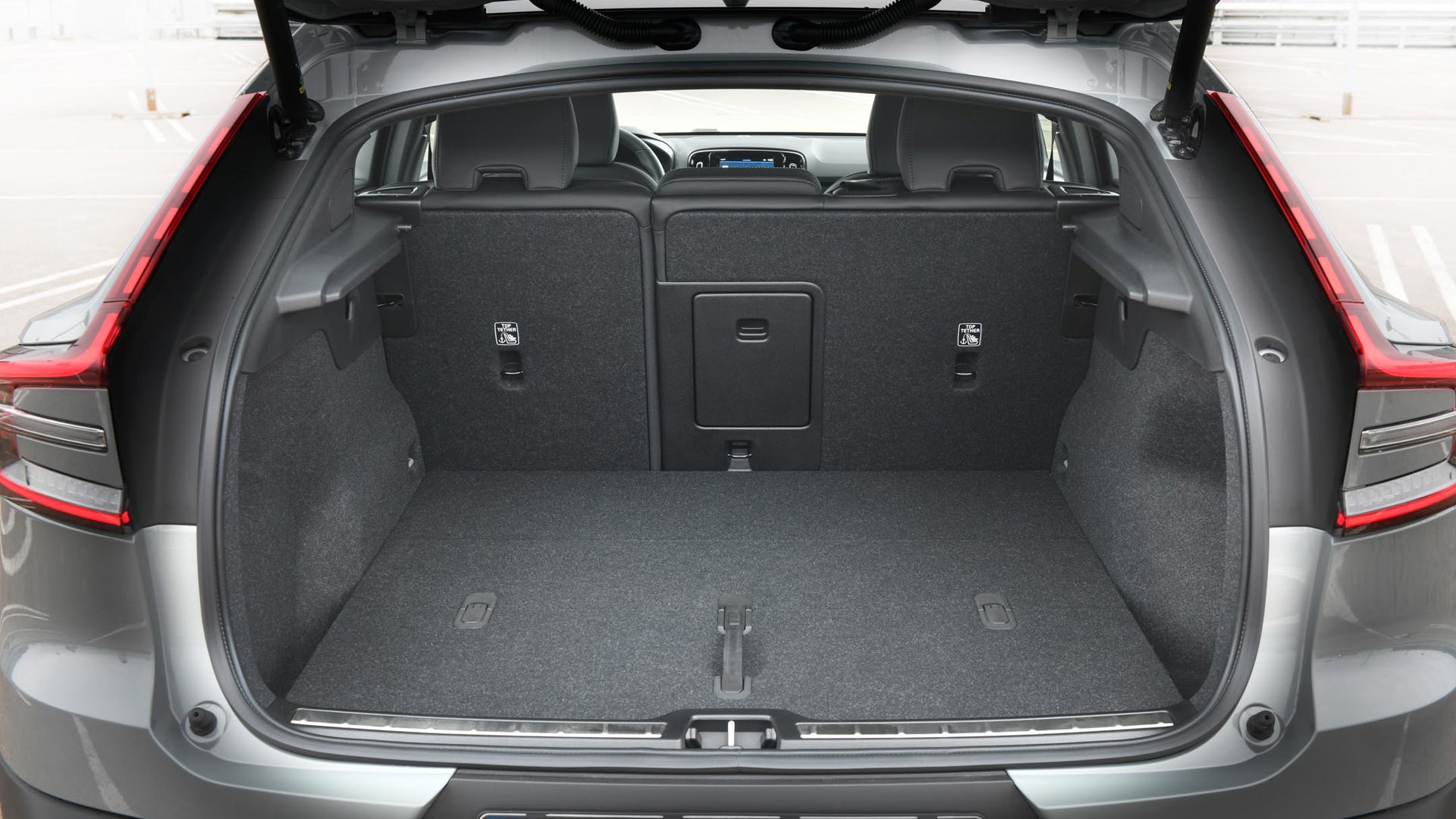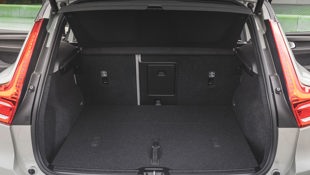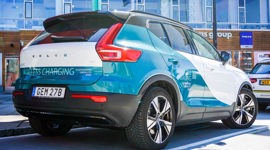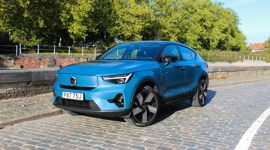Not every question has a right answer and a wrong one.
Best vacation destination? Apple or Android? Favourite pizza toppings? These are precisely the kinds of queries that are sure to garner a wide range of responses, depending on who you ask.
Similarly, which of the 2024 Volvo C40 Recharge and its boxy and upright sibling, the 2024 Volvo XC40 Recharge, is right for you isn’t as black and white as it might first seem. Determining factors extend beyond the obvious, too – and that’s in spite of all they have in common.
With significant changes to the 2024 versions of both, this handy guide should help zero in on which is the right all-electric Volvo crossover for you – or further complicate the decision-making process entirely.
Same Platform, New Powertrains
Before we dive into their differences, let’s cover off their similarities. These two are true fraternal twins, with the same platforms and powertrains underpinning them both. When it comes to the latter, changes for 2024 include the addition of a single-motor setup that sends power to the rear wheels only, which helps both the C40 and XC40 Recharge travel further between charging.
The same is true of the all-wheel-drive versions, which use the same new electric motor in the back as the rear-wheel-drive models that was developed internally by Volvo. It also adds a new motor up front that’s of the asynchronous variety, so it doesn’t receive power all the time like the one in the back. That means the all-wheel drive system is variable in nature, with the front wheels only engaged in certain situations, like accelerating or when the rear wheels lose traction.
Regardless of body style, opting for rear-wheel drive is rewarded with 248 hp and 310 lb-ft of torque, while the additional motor pushes output to 408 hp and 497 lb-ft of torque with all-wheel drive along for the ride. The latter figures are up slightly from the previously all-wheel drive-only C40 and XC40 Recharge models, which made 402 hp and 486 lb-ft of torque.
Going the Distance
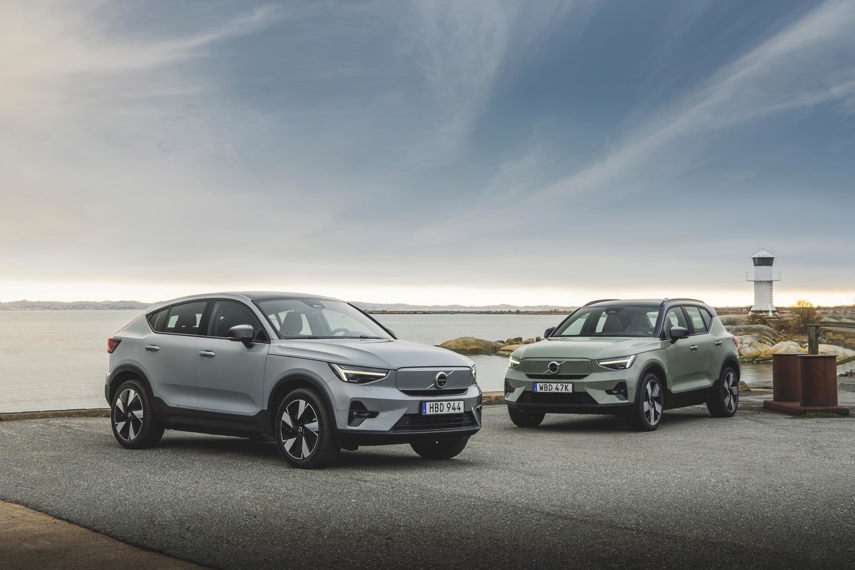
Both of these crossovers can go further than before thanks to their new powertrains, although the sleek and slippery C40 maintains an advantage over its more traditional sibling. With the same 78-kWh battery pack, the all-wheel-drive 2024 C40 Recharge can travel an estimated 413 km compared to 364 km before, while the 2024 XC40 Recharge can cover approximately 408 km versus 359 km previously.
Then there are the new rear-wheel-drive variants, which have a different battery chemistry that’s more dense and has an 82-kWh capacity. Fewer driven wheels means the C40 can travel an estimated 477 km between charging, while the all-electric XC40 can do 471 km. As an added bonus, the rear-driven versions can charge at speeds as fast as 200 kW compared to 150 kW for their all-wheel-drive siblings.
Unique Drive Experiences
These two don’t just look different – they drive differently, too. Particularly with the all-wheel drive powertrain, the C40 Recharge feels like a smaller vehicle from the driver’s seat. There’s a sense that it’s a little more spry and spritely, although it lacks the steering heft of its sibling. Even ratcheting up the steering firmness setting left it feeling far overboosted by comparison. Even so, it’s a smooth operator that’s well suited to easy driving on city streets.
The XC40 Recharge has the styling of a more conventional crossover and a drive experience to match. It’s not as if it feels like a massive vehicle from behind the wheel by any stretch, but beyond the heavier steering system there’s a rigidness here that its sportback-like sibling lacks. During a back-to-back drive of both, the XC40’s suspension felt a little less forgiving, although it’s still short of being classified as uncomfortable.
Spacious vs. Stylish
Not to sell the XC40 short, as it remains one of the sharpest looking crossovers around, but it’s simply not as fashion-forward as the C40. Whereas stylishness comes second to practicality for the taller of the two, it’s the other way around inside its sibling.
They feel mostly the same in the front halves of their cabins, and that includes identical dashboards, centre consoles, and steering wheels. Likewise, rear legroom is the same from one to the next; however, headroom drops off significantly with the C40’s sloping roofline. There’s just 932 mm (36.7 in) of upright space in the back seat compared to 974 mm (38.3 in) in the XC40 Recharge with the optional panoramic sunroof and 994 mm (39.1 in) without. (The same style of sunroof is standard on the C40.)
Likewise, there’s less cargo room in the C40, with 489 L behind the back seats compared to 578 L in the XC40 in the same configuration. Beyond its additional outright volume, the height of the cargo area makes the XC40 inherently more practical when it’s time to transport items like large boxes, while the view out the back window is much better than it is in the C40.
So Which Is Better?
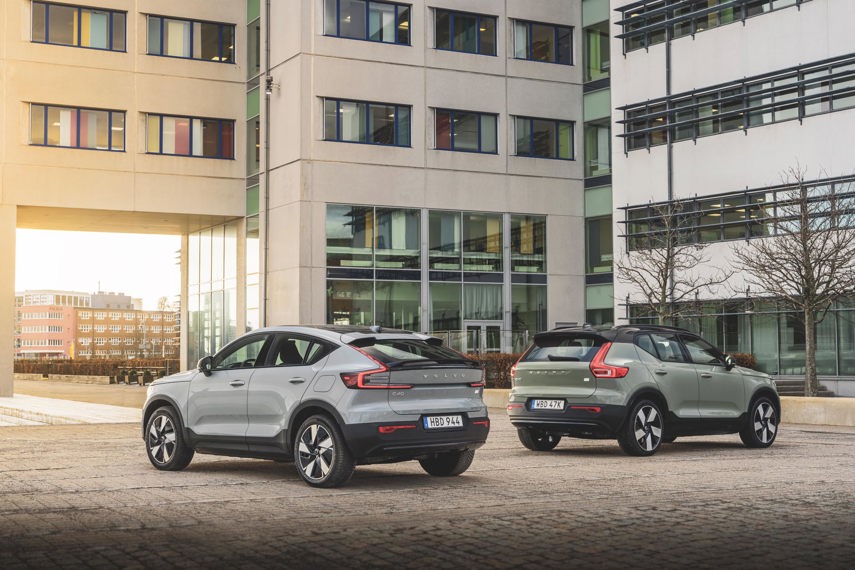
Again, there’s no right or wrong answer here, and which one is right for you will come down to what you plan to do with it. Both are perfectly capable commuters, and their newfound range makes them viable even for single-vehicle households, which wasn’t really the case before.
The 2024 Volvo C40 Recharge makes good use of the available space inside in spite of the shallow rake to its roof. It’s also a little more nimble and easier to drive, which certainly has its appeal. By comparison, the 2024 Volvo XC40 Recharge drives a lot more like a traditional crossover, which some drivers will appreciate more. However, it also has a stronger use case for more shoppers. While its range is a little shorter than that of its sibling, if you transport people or stuff with any frequency, it simply makes more sense.
